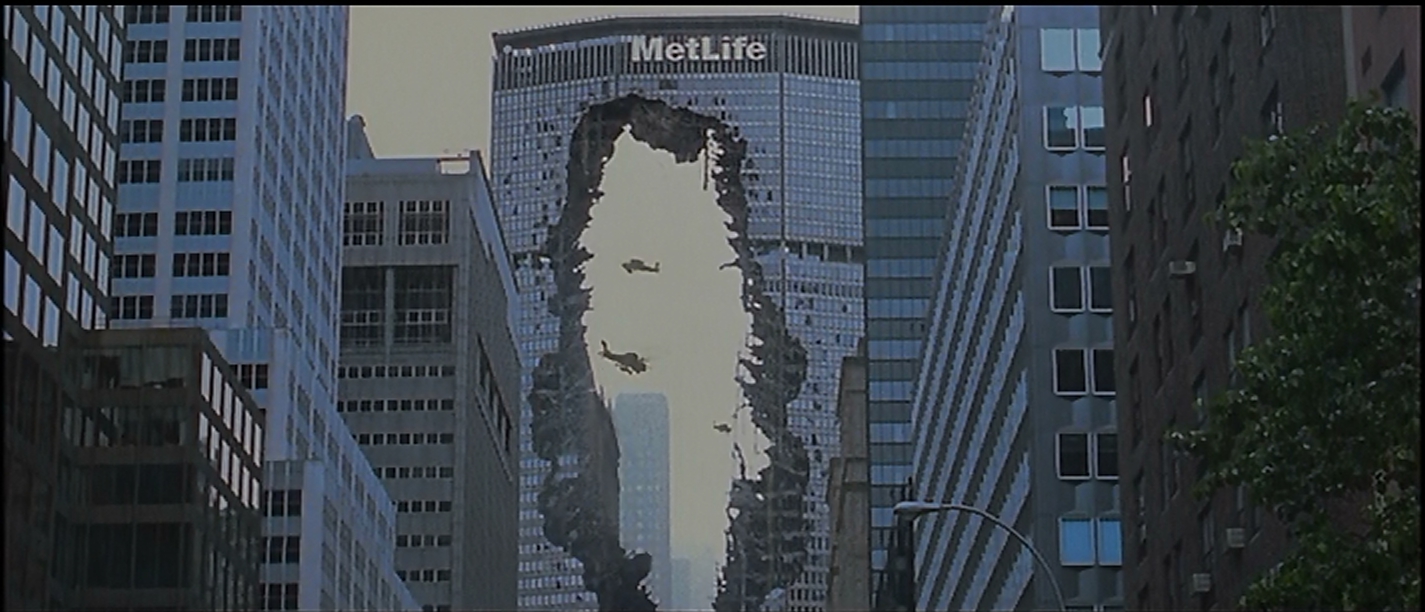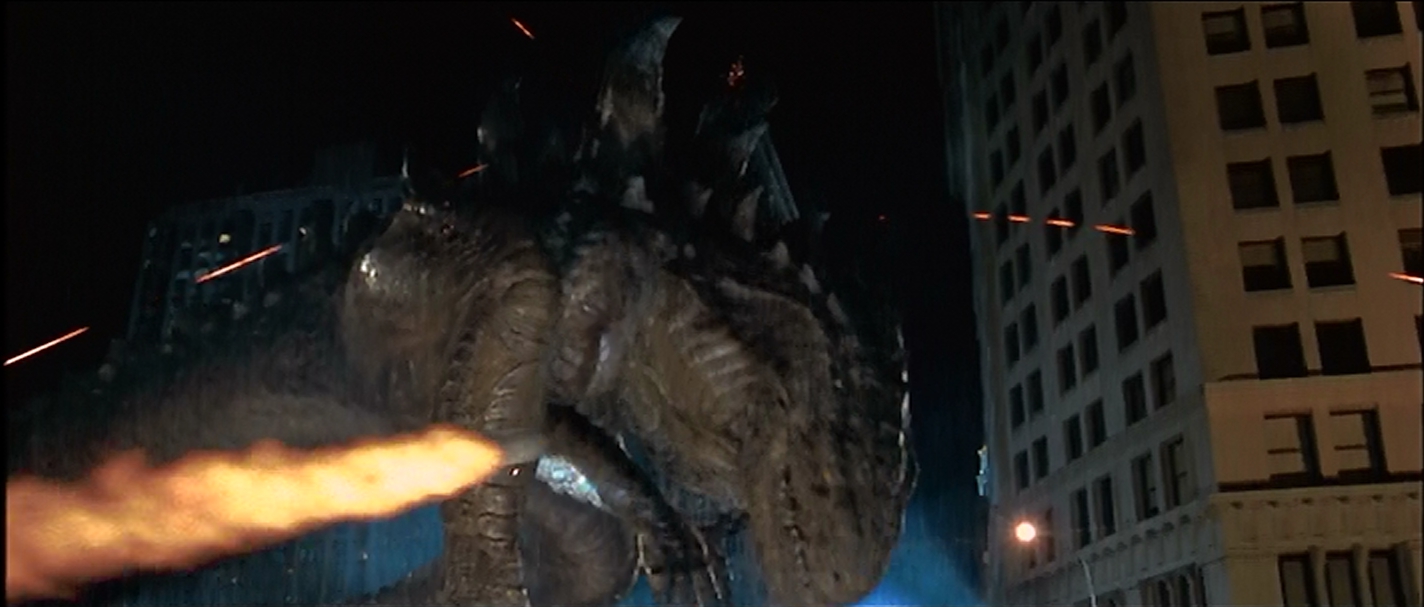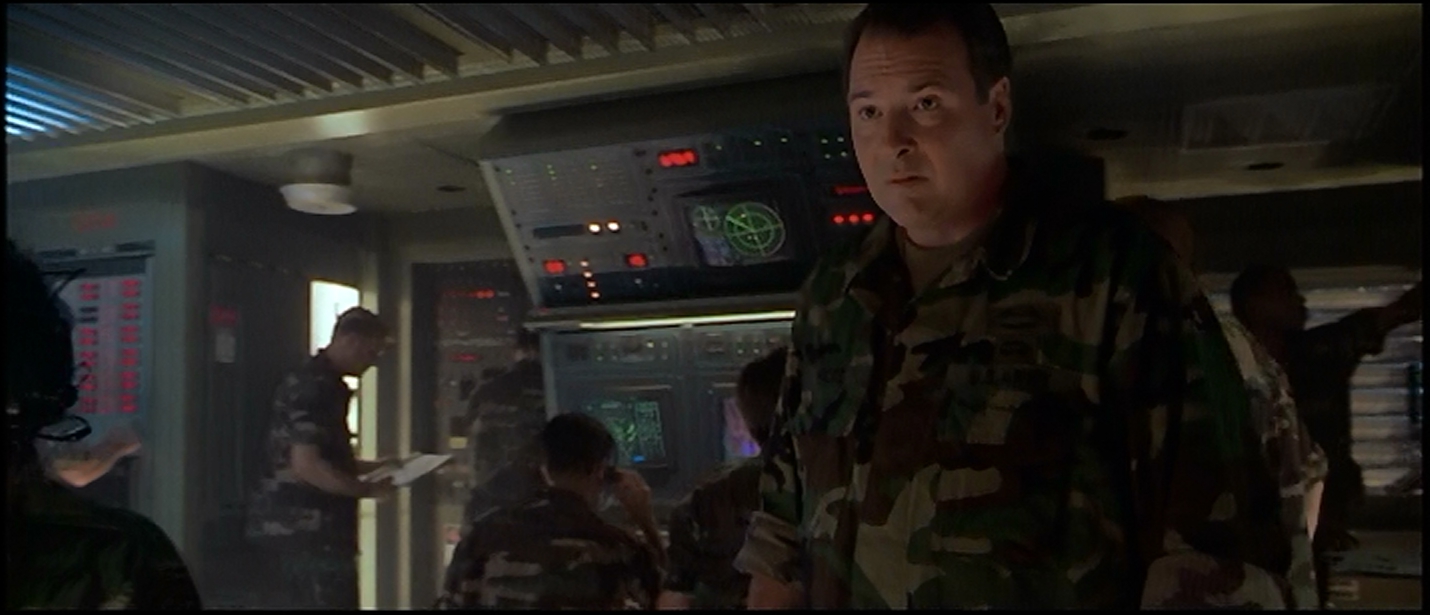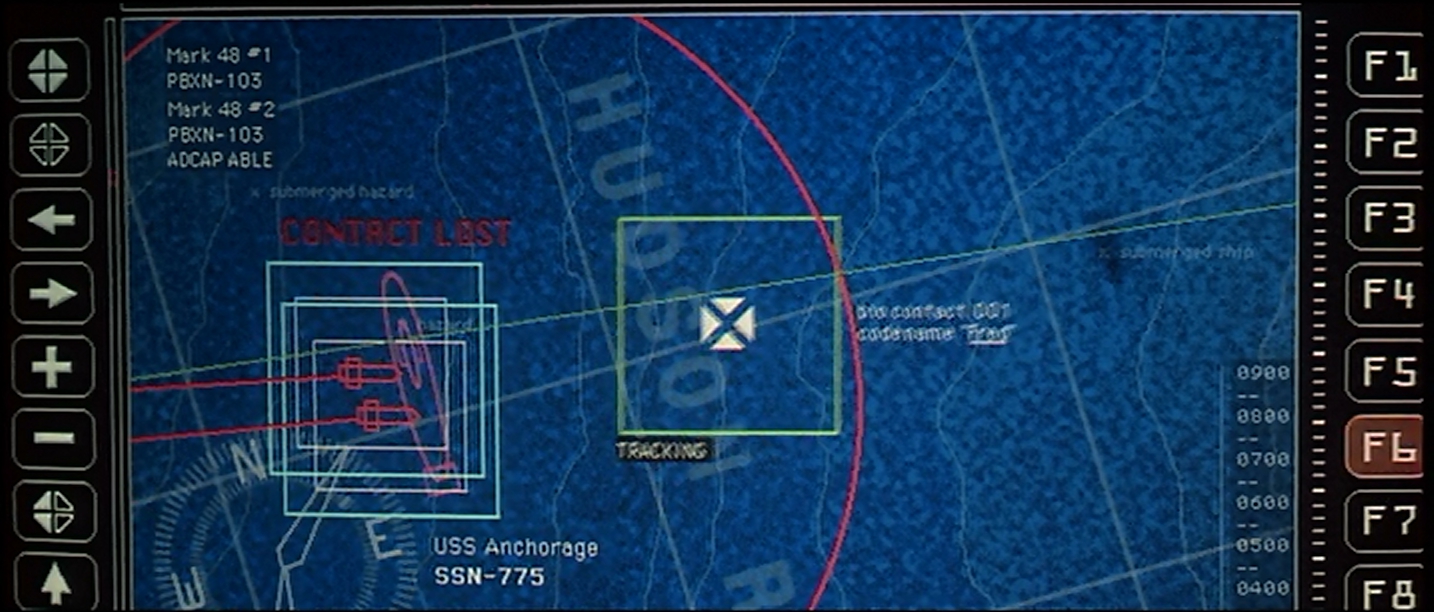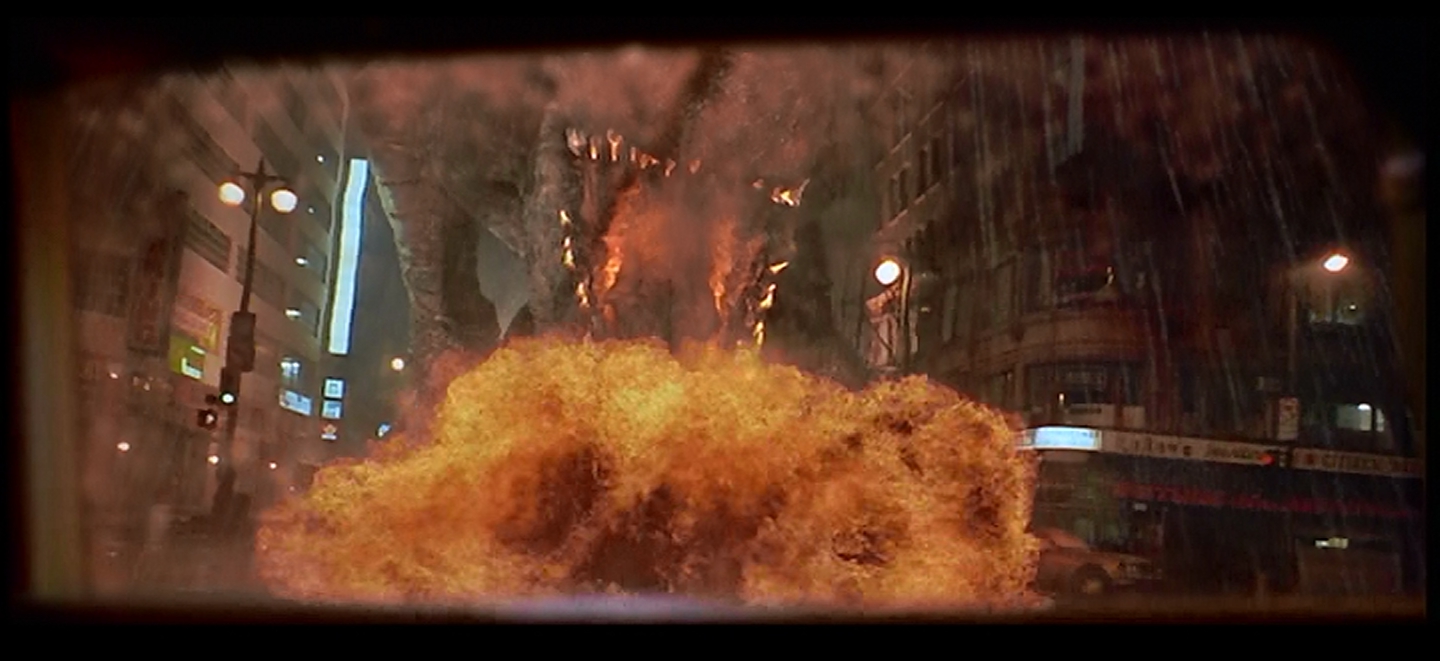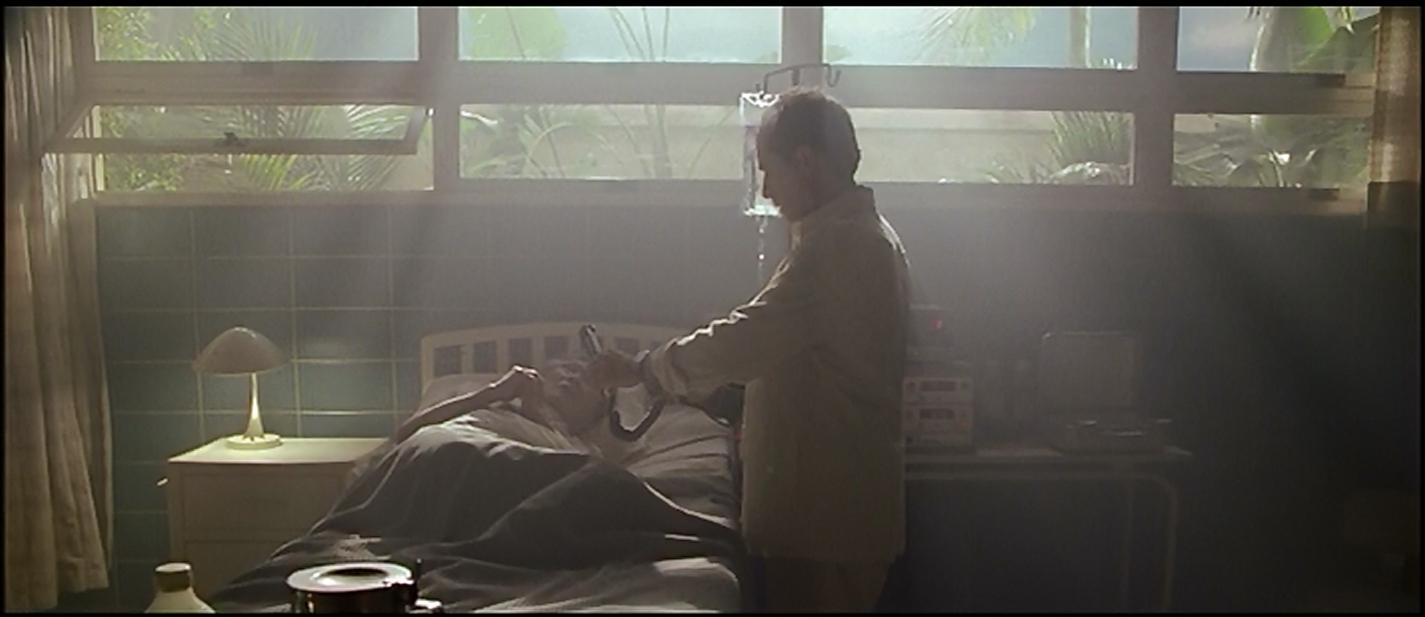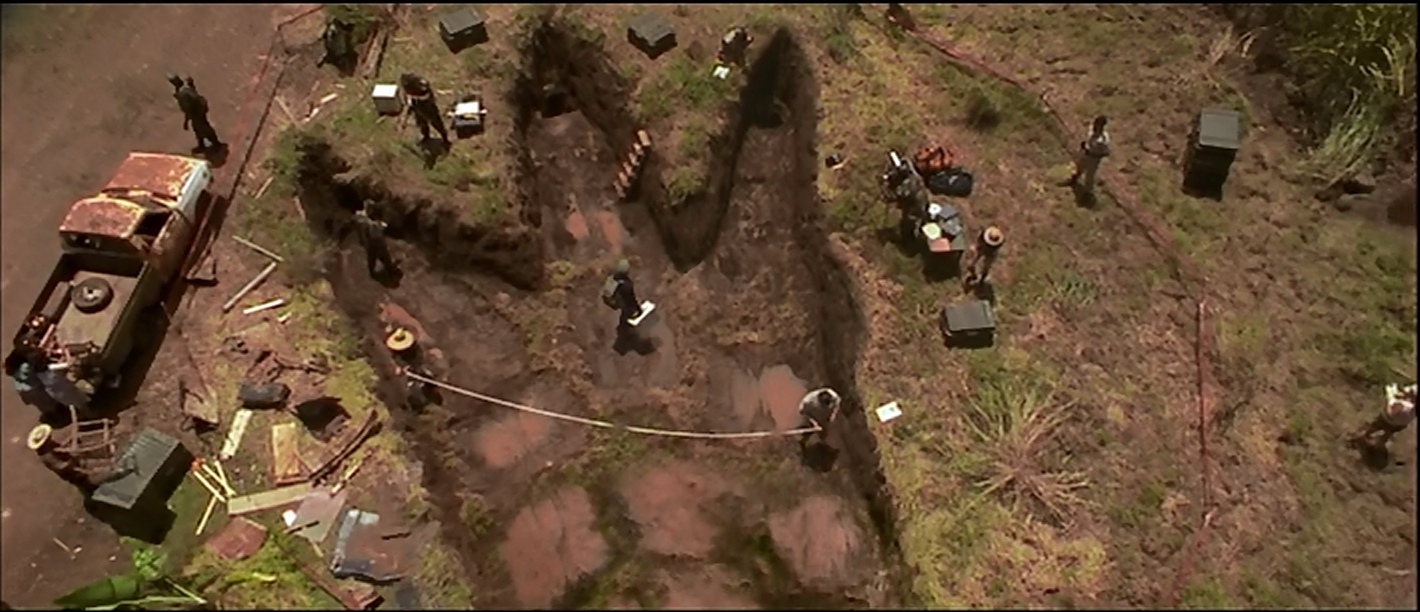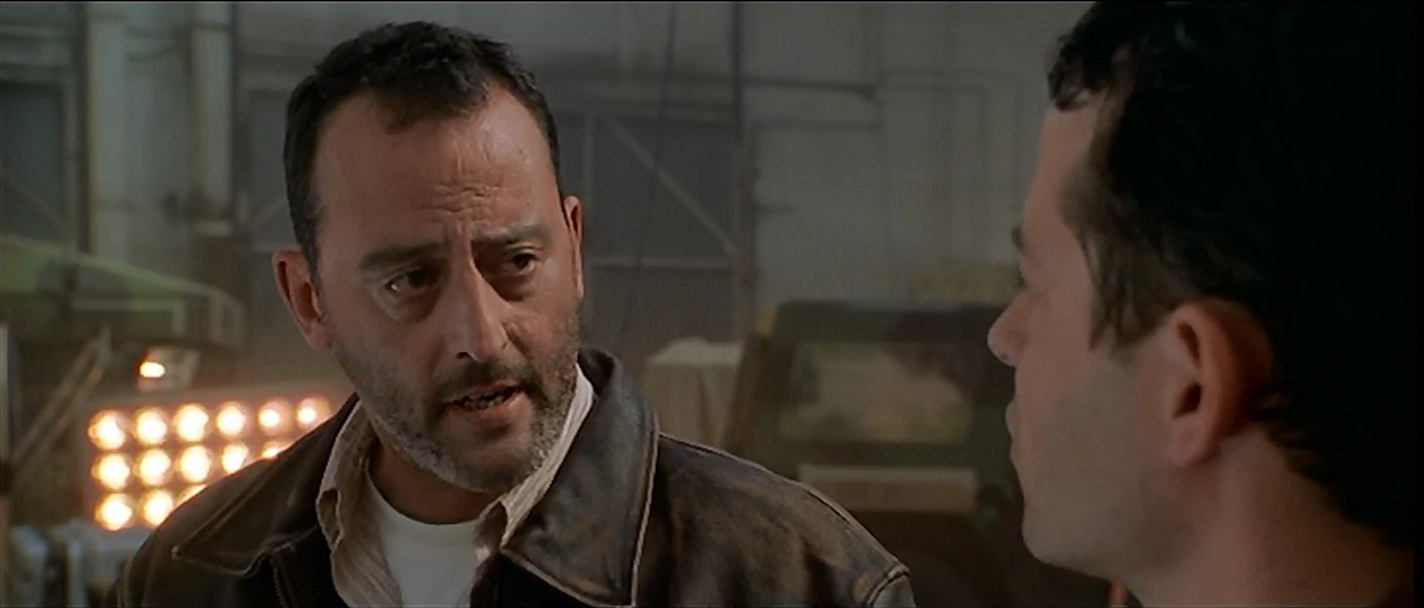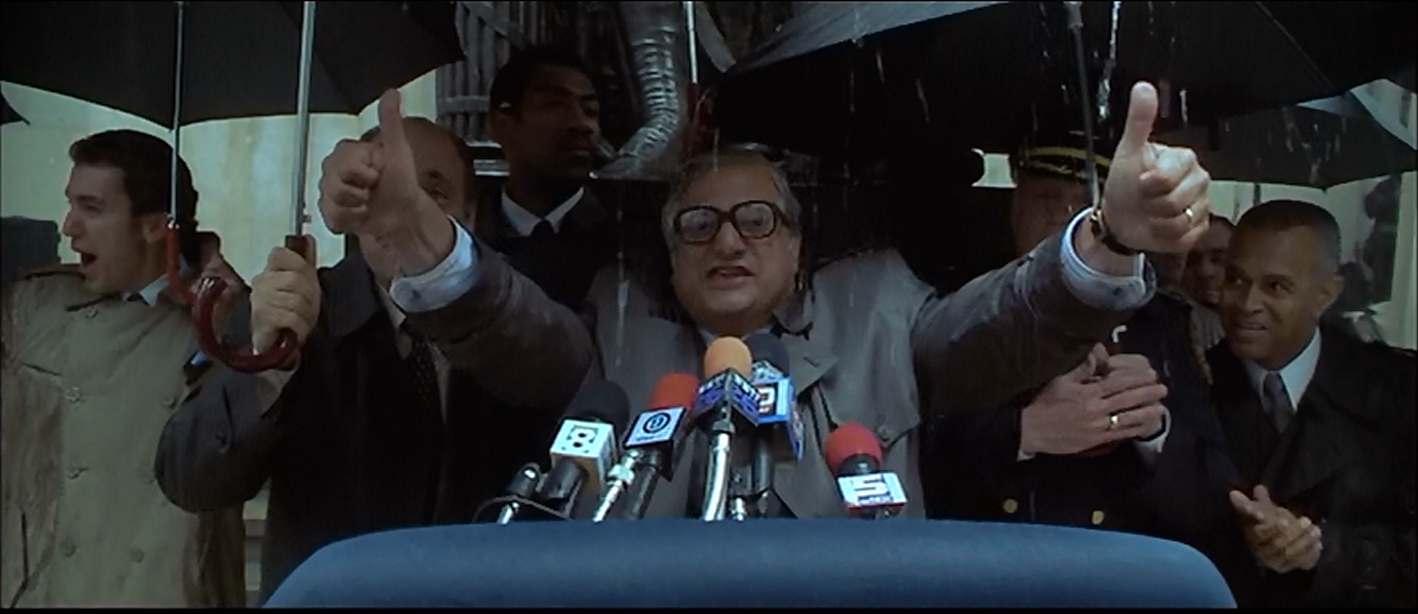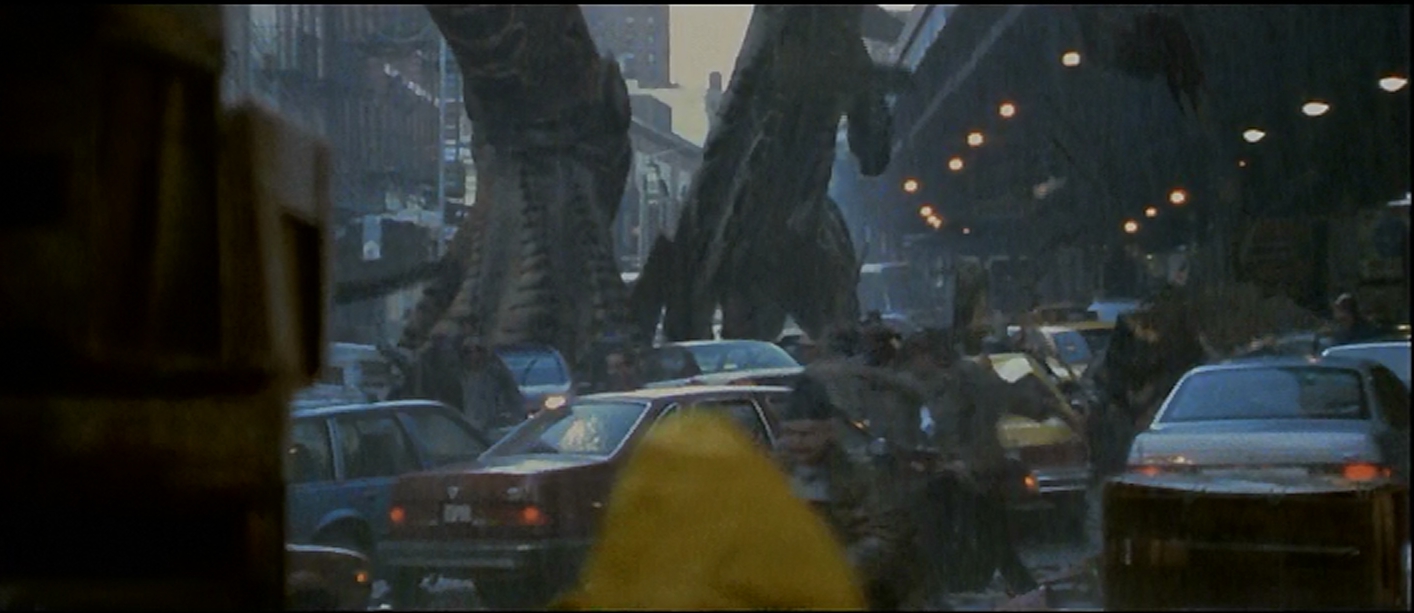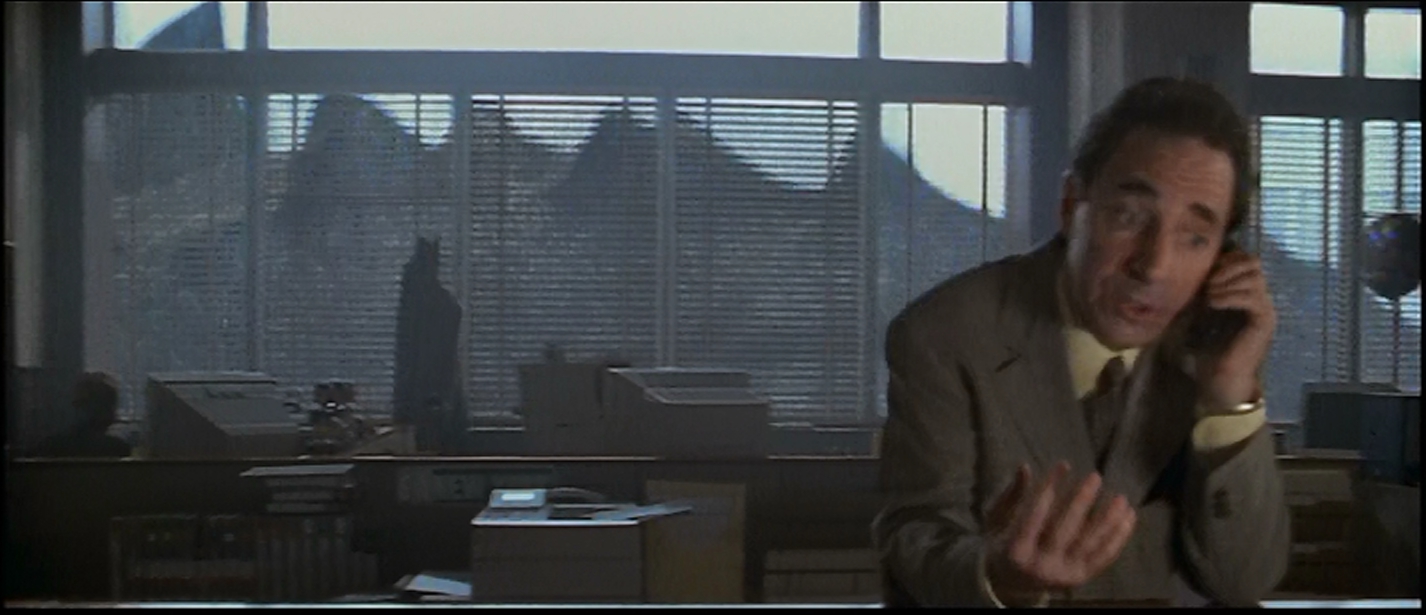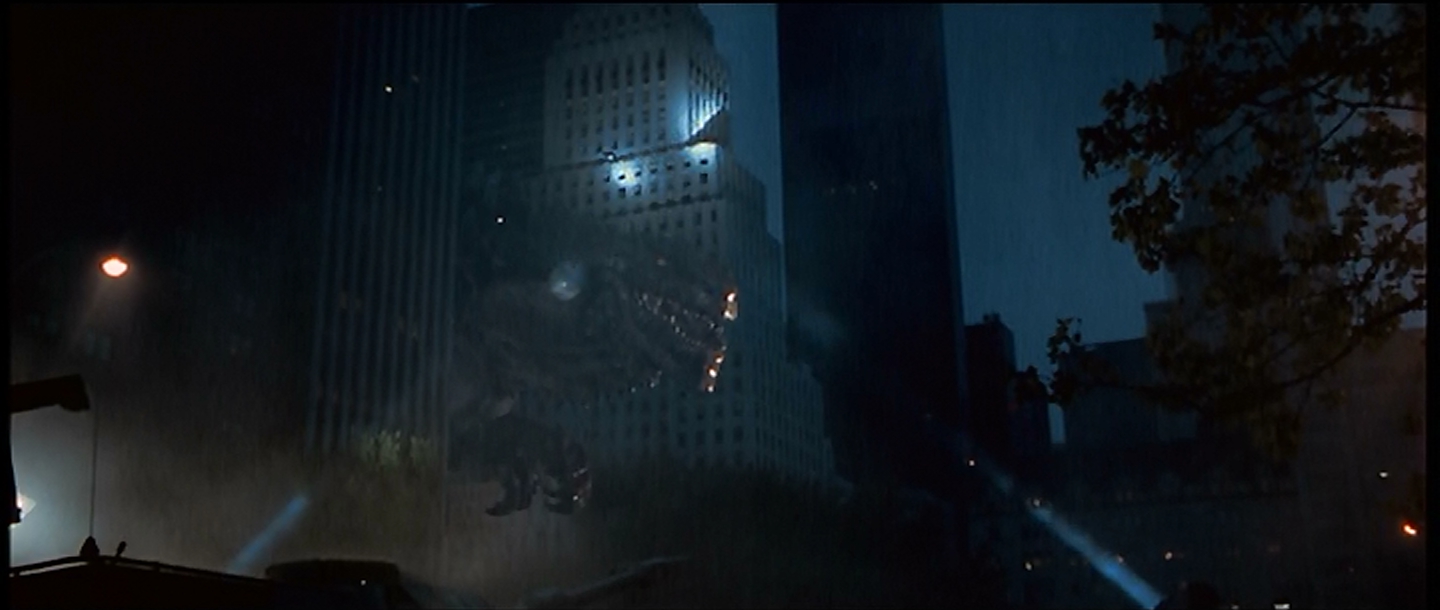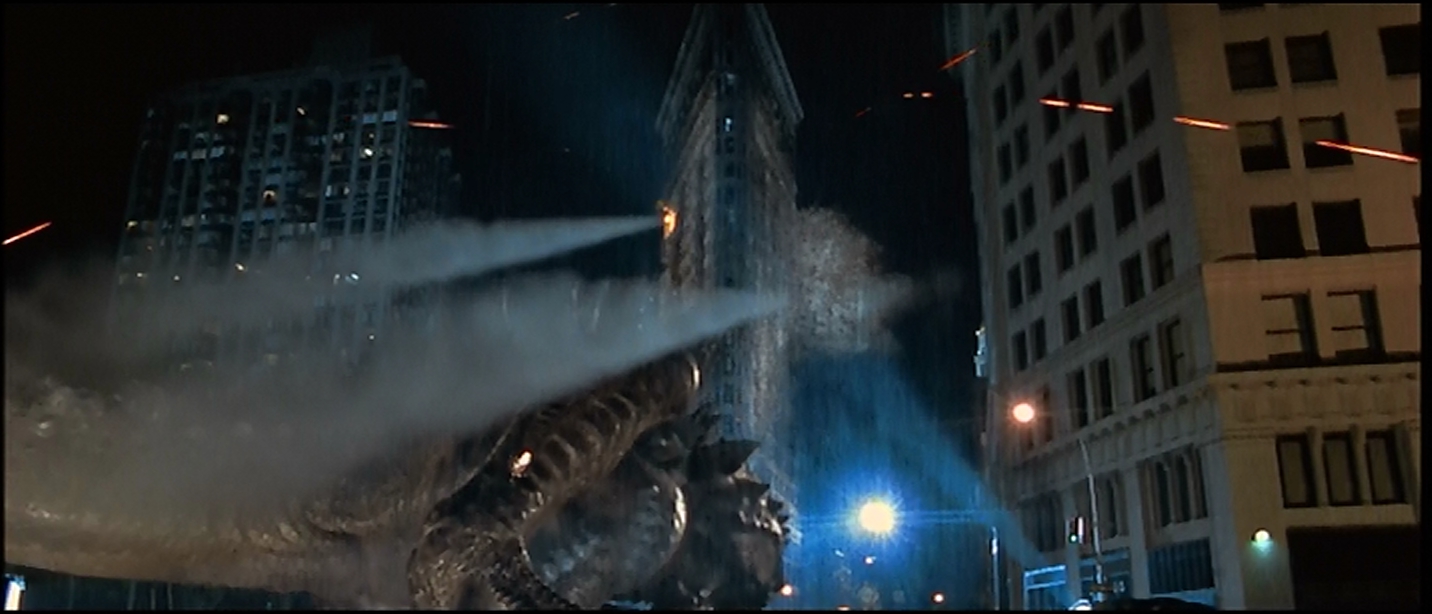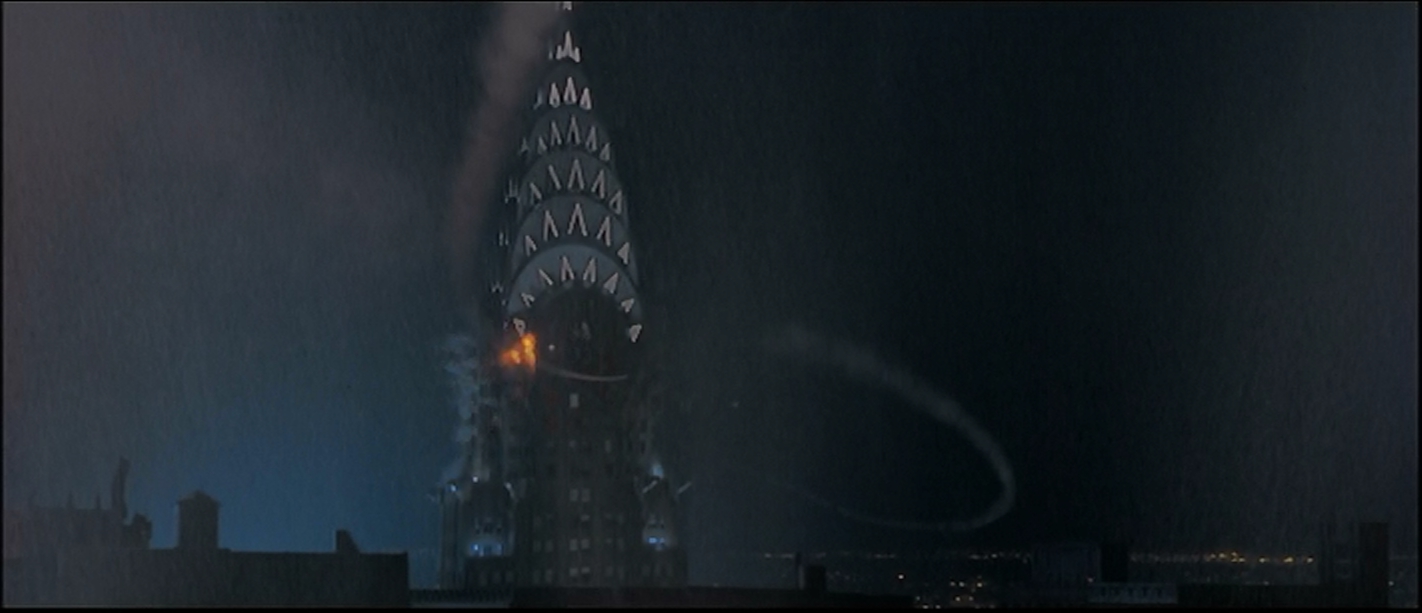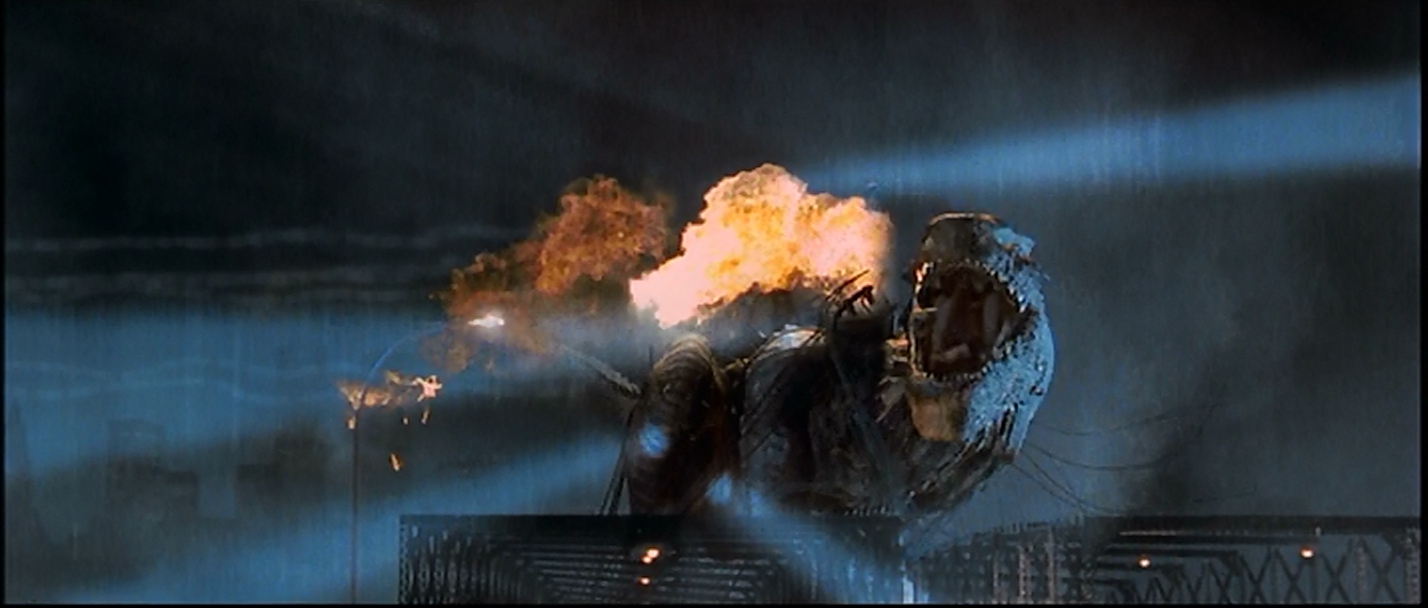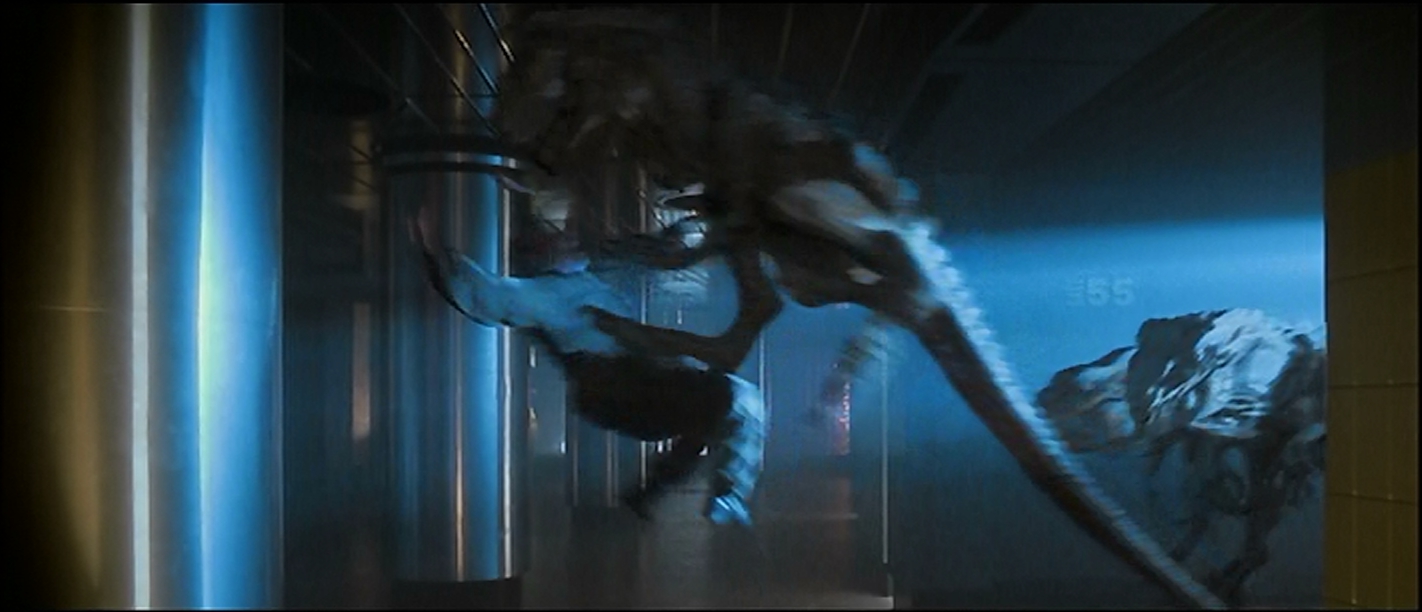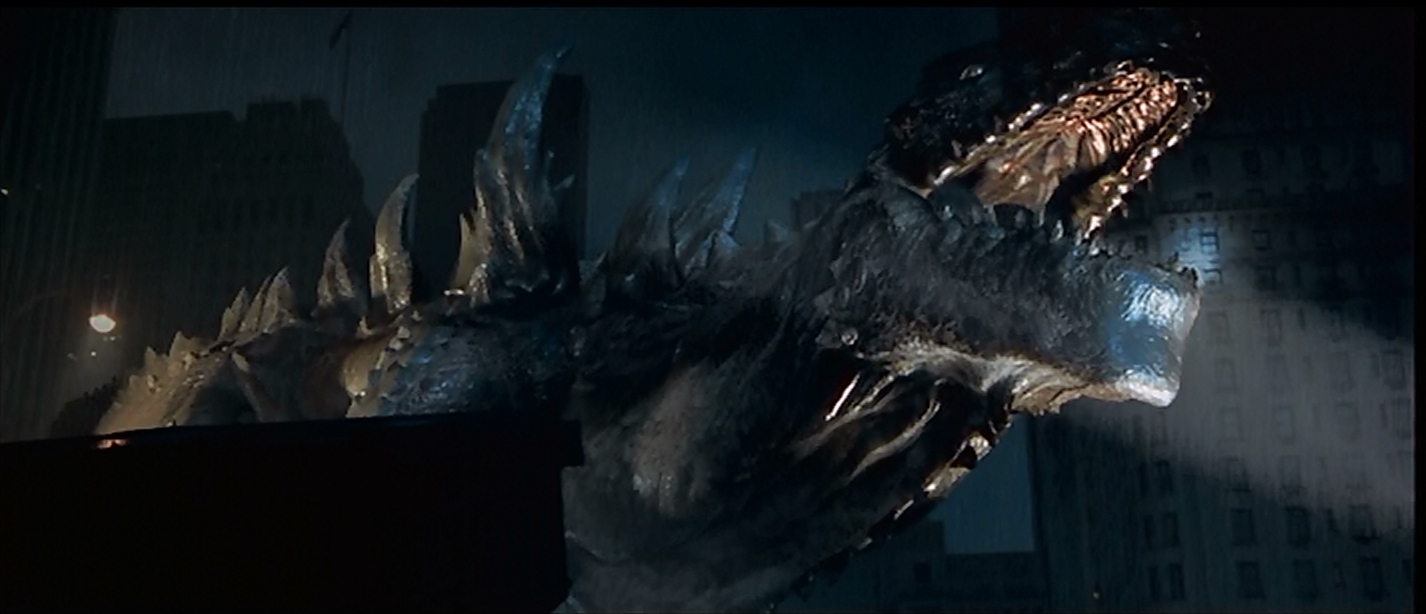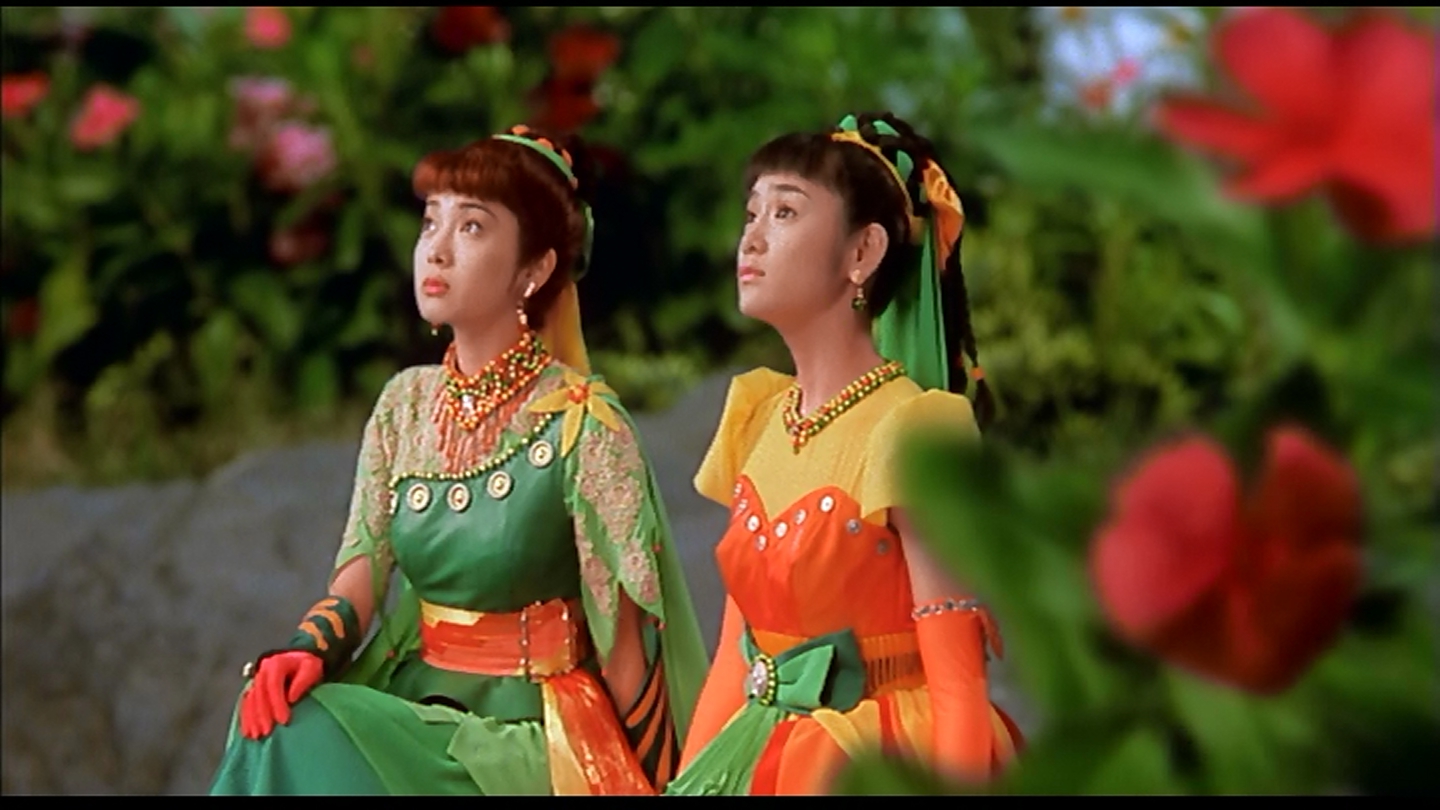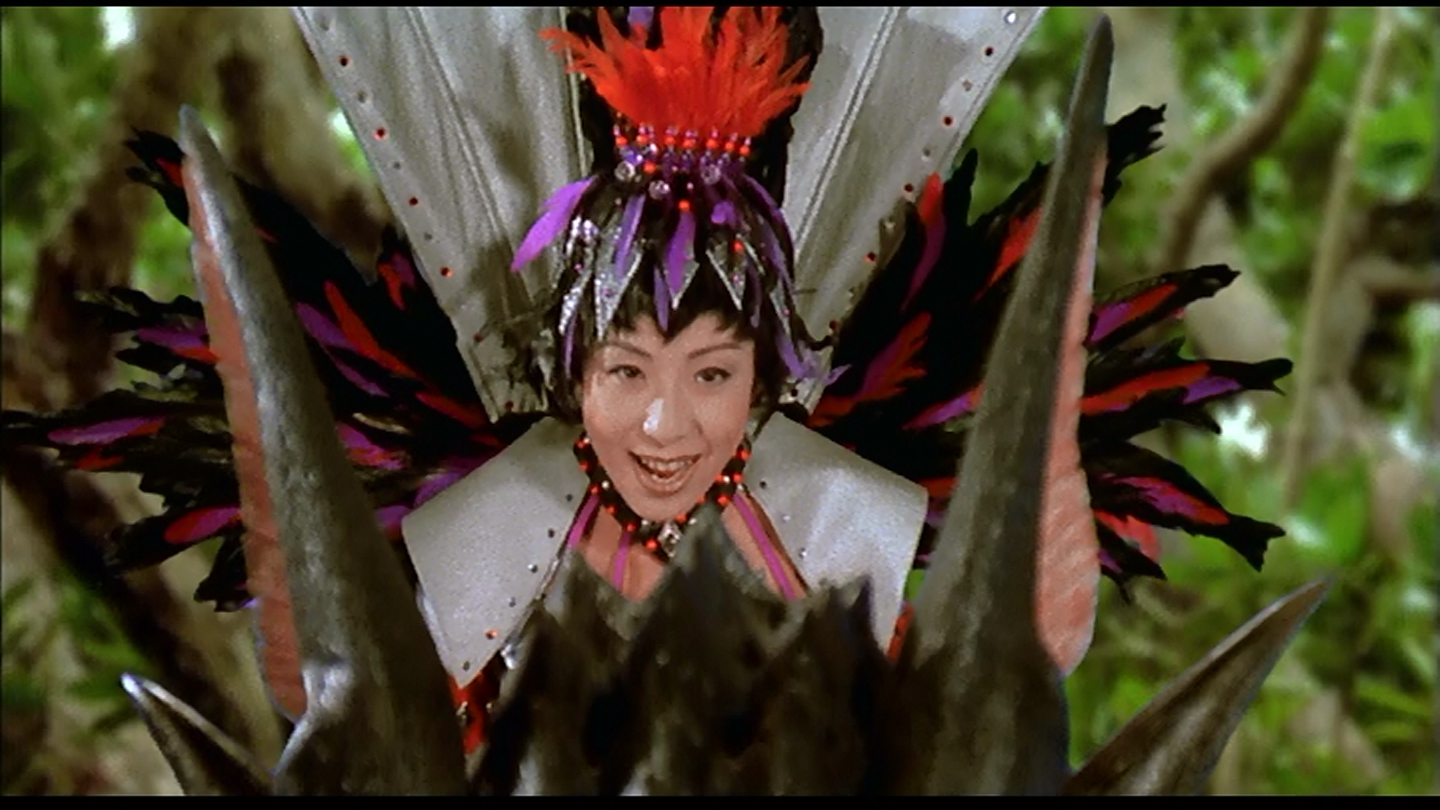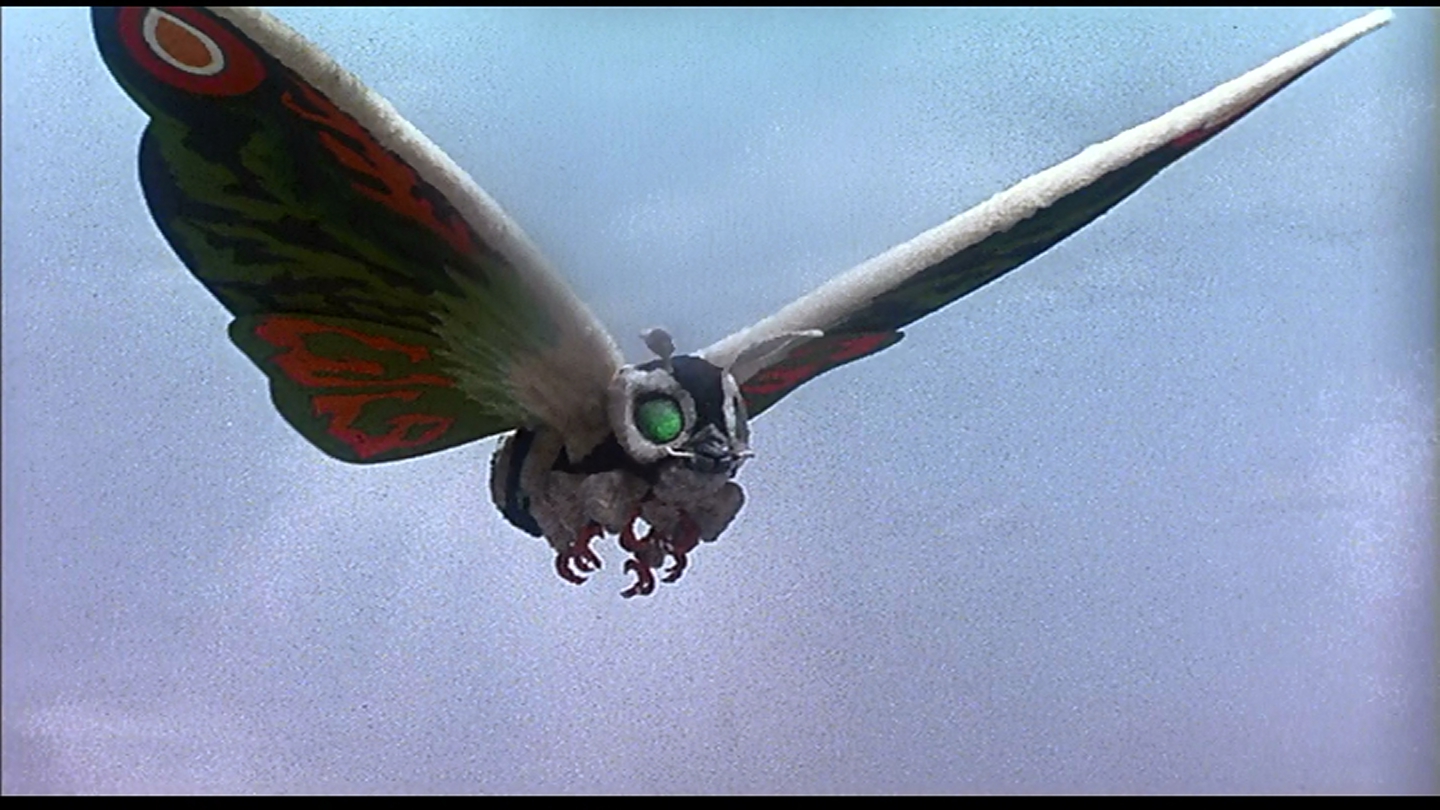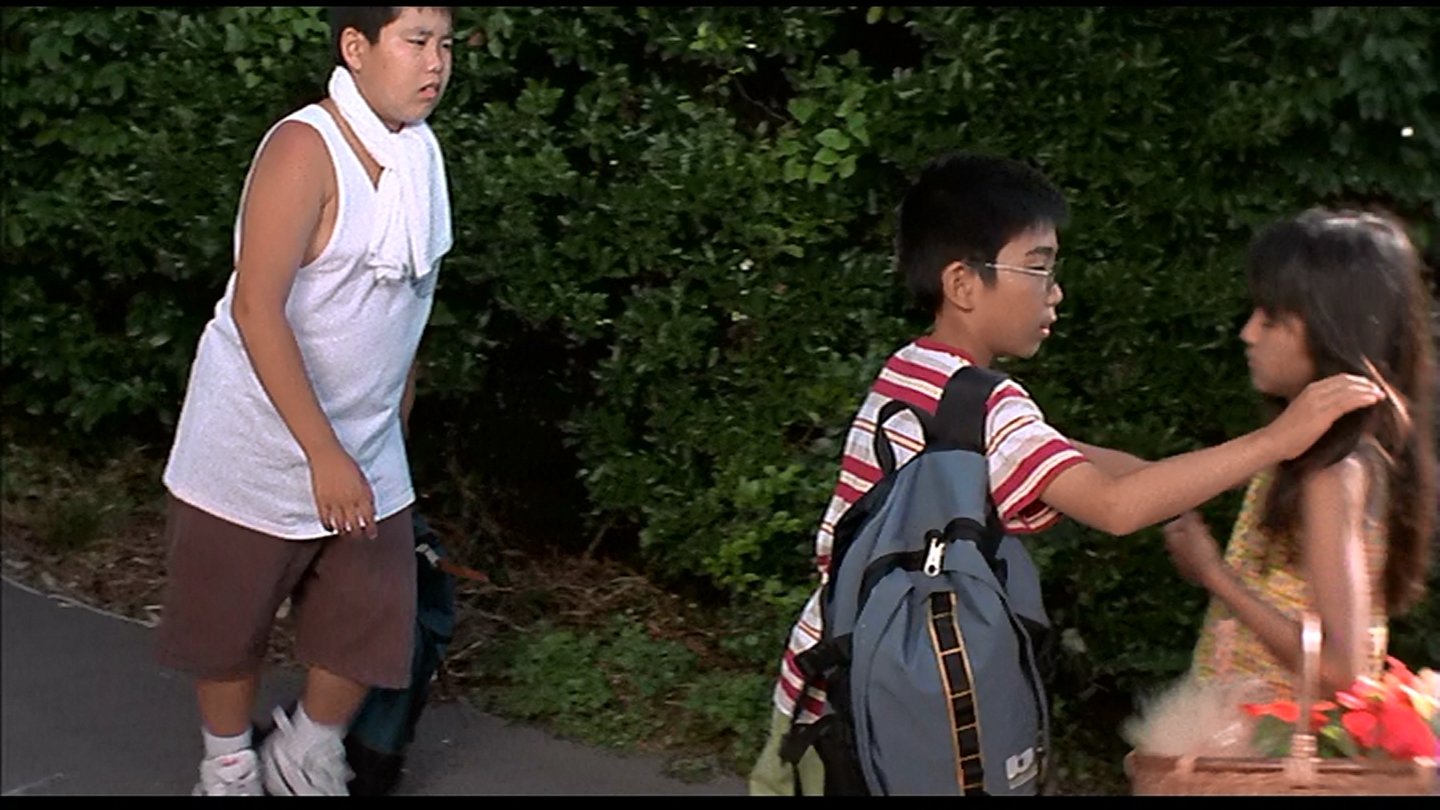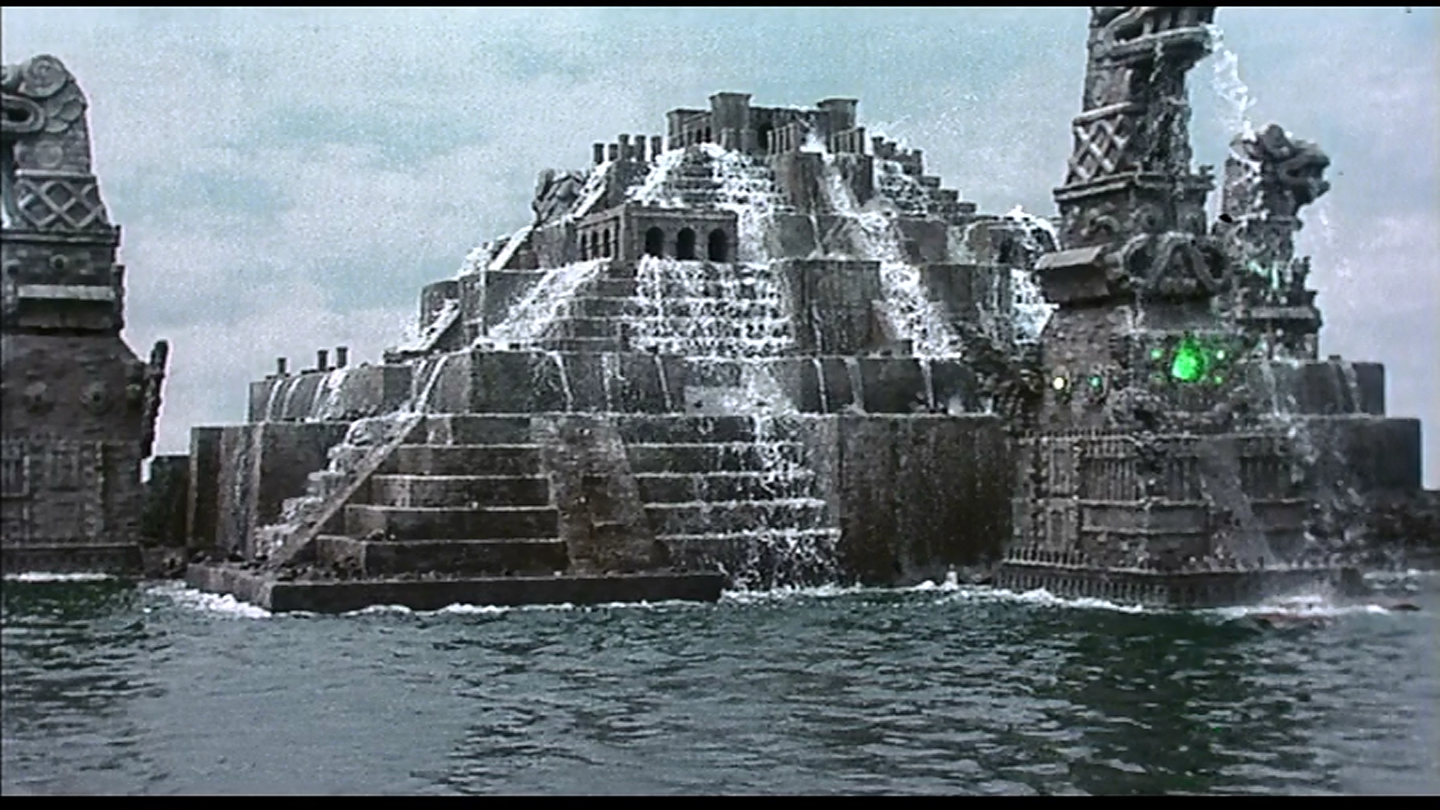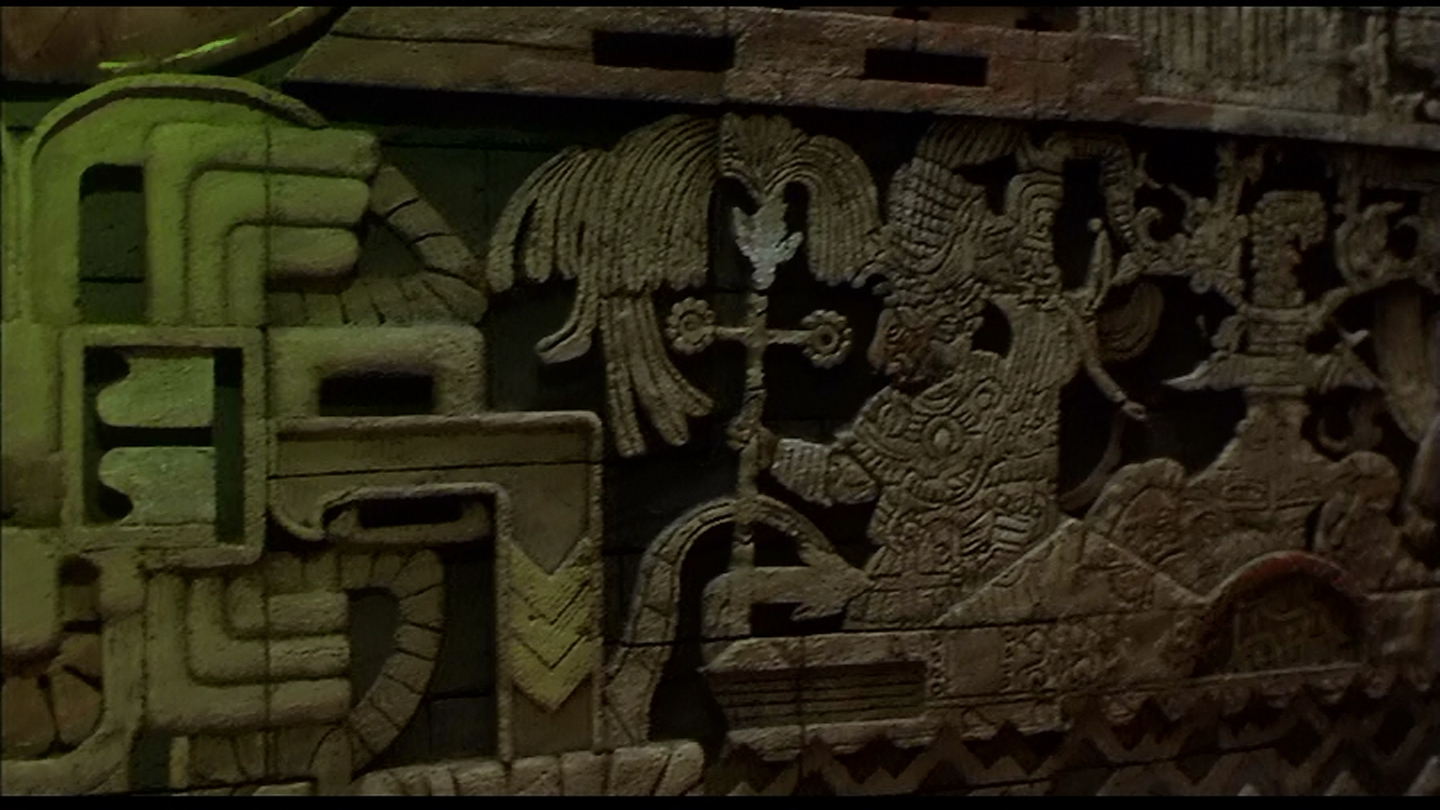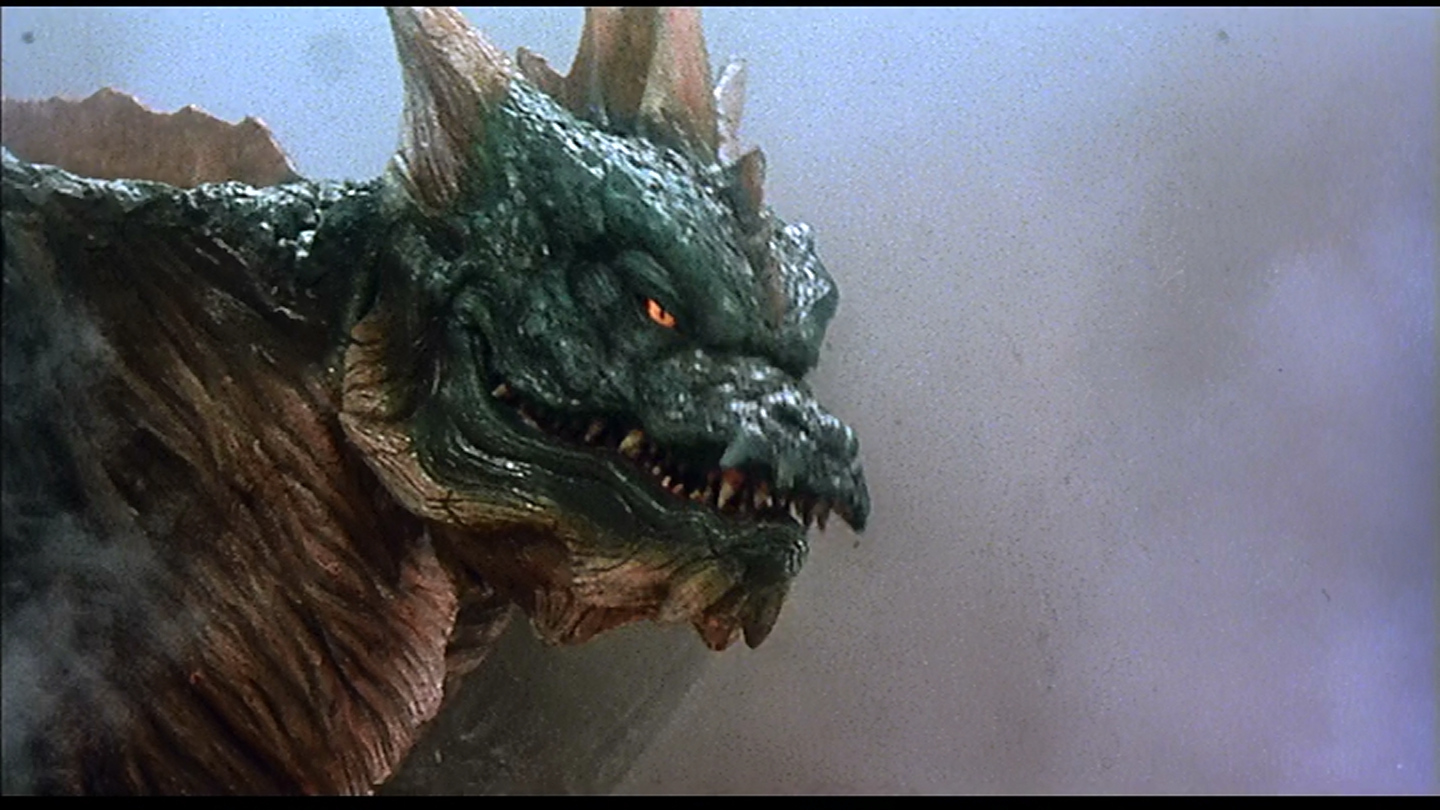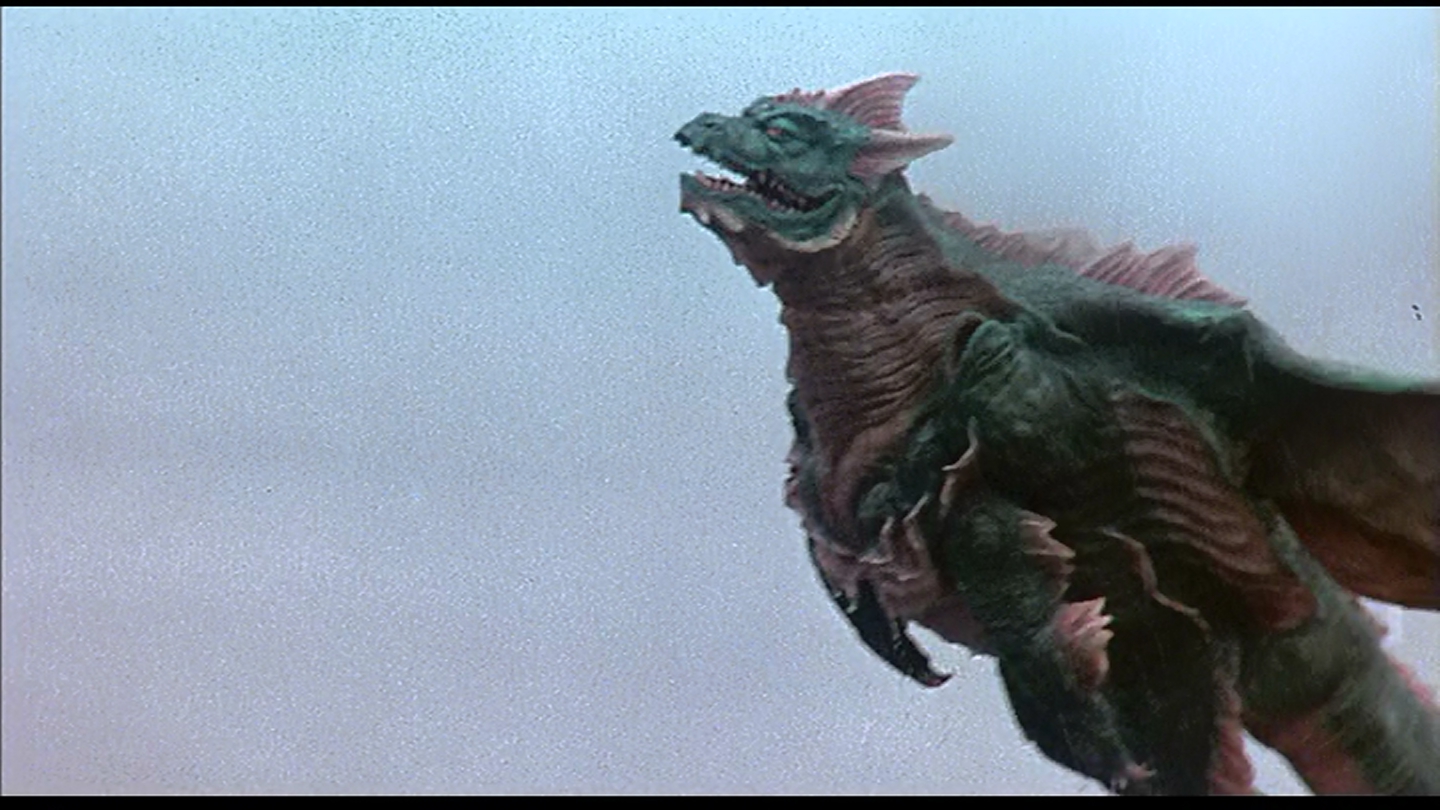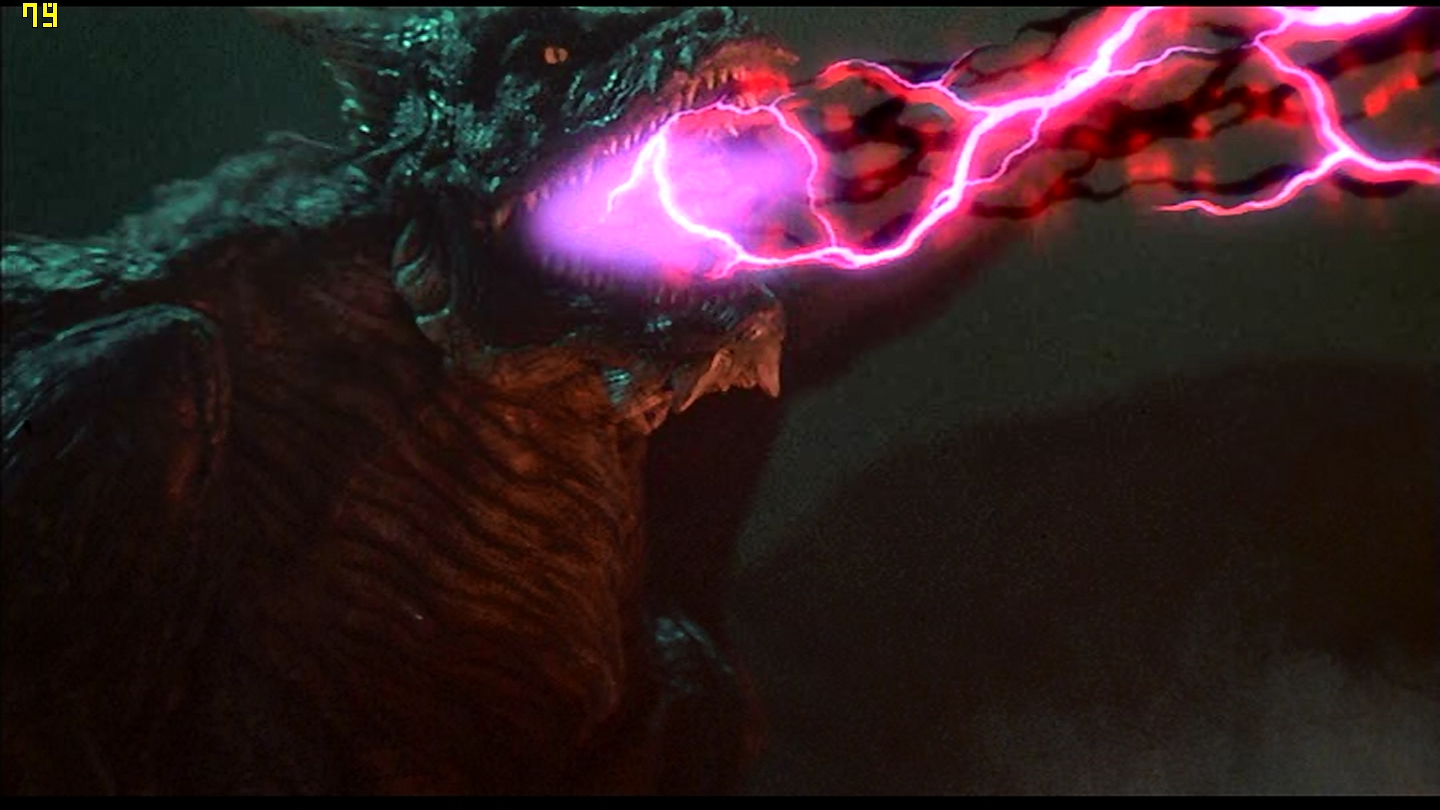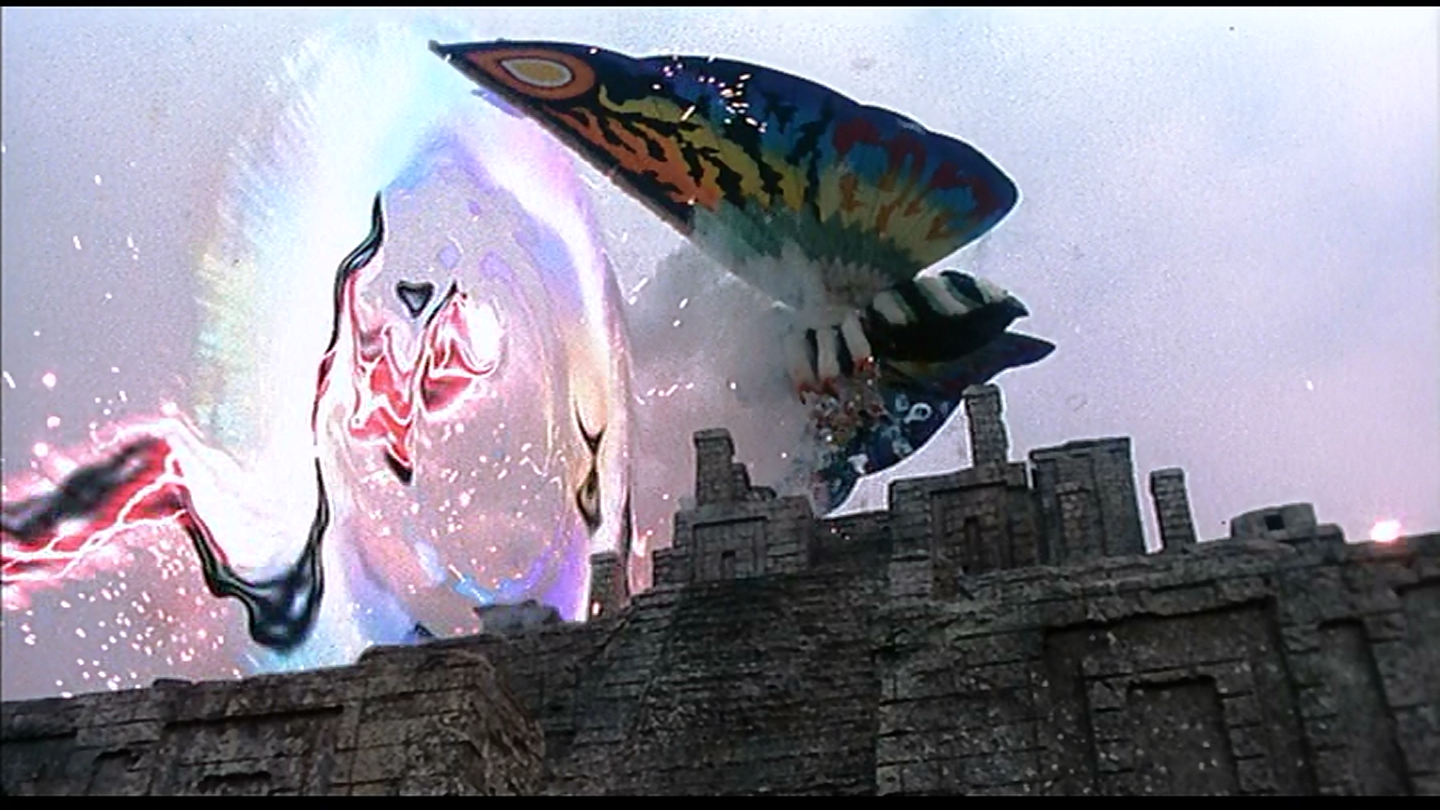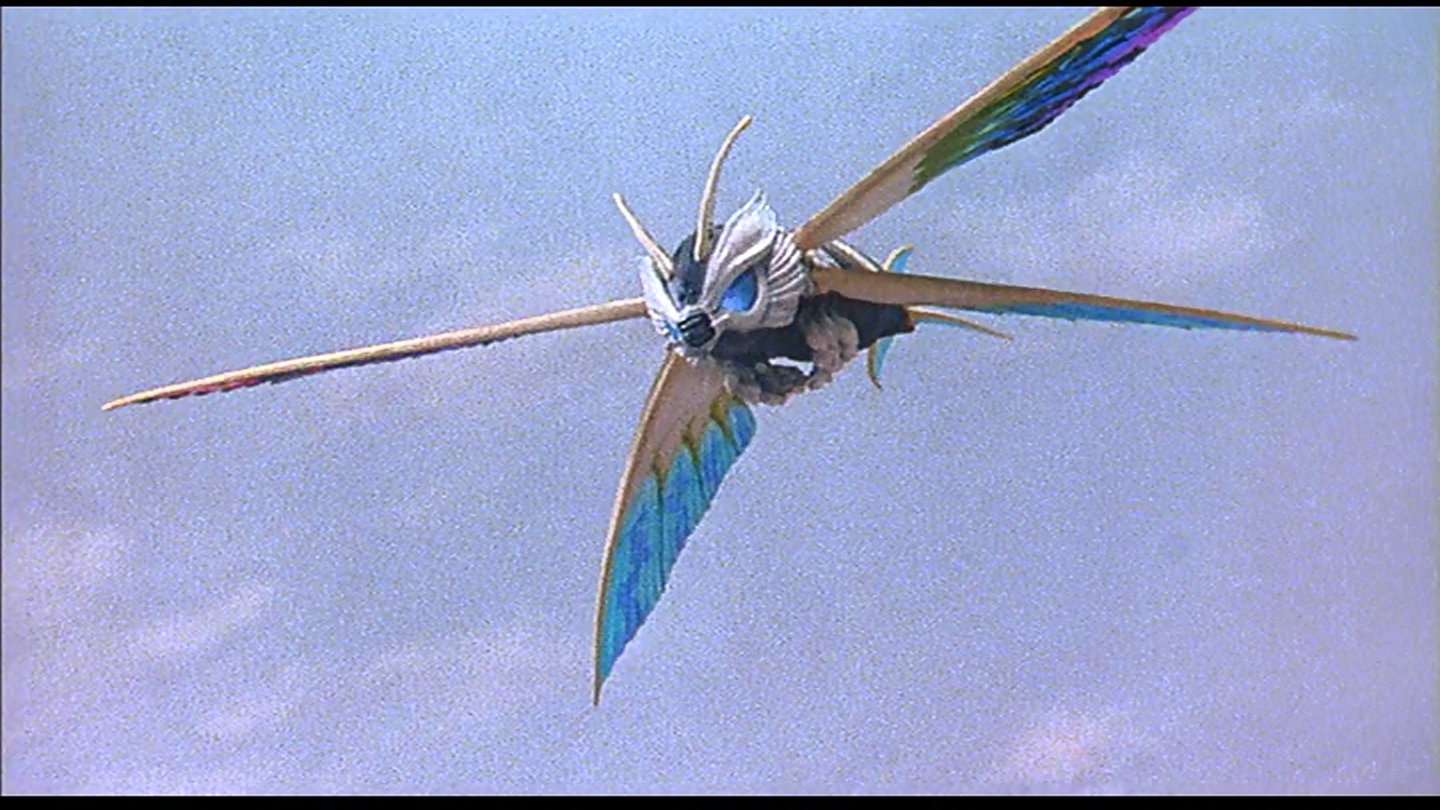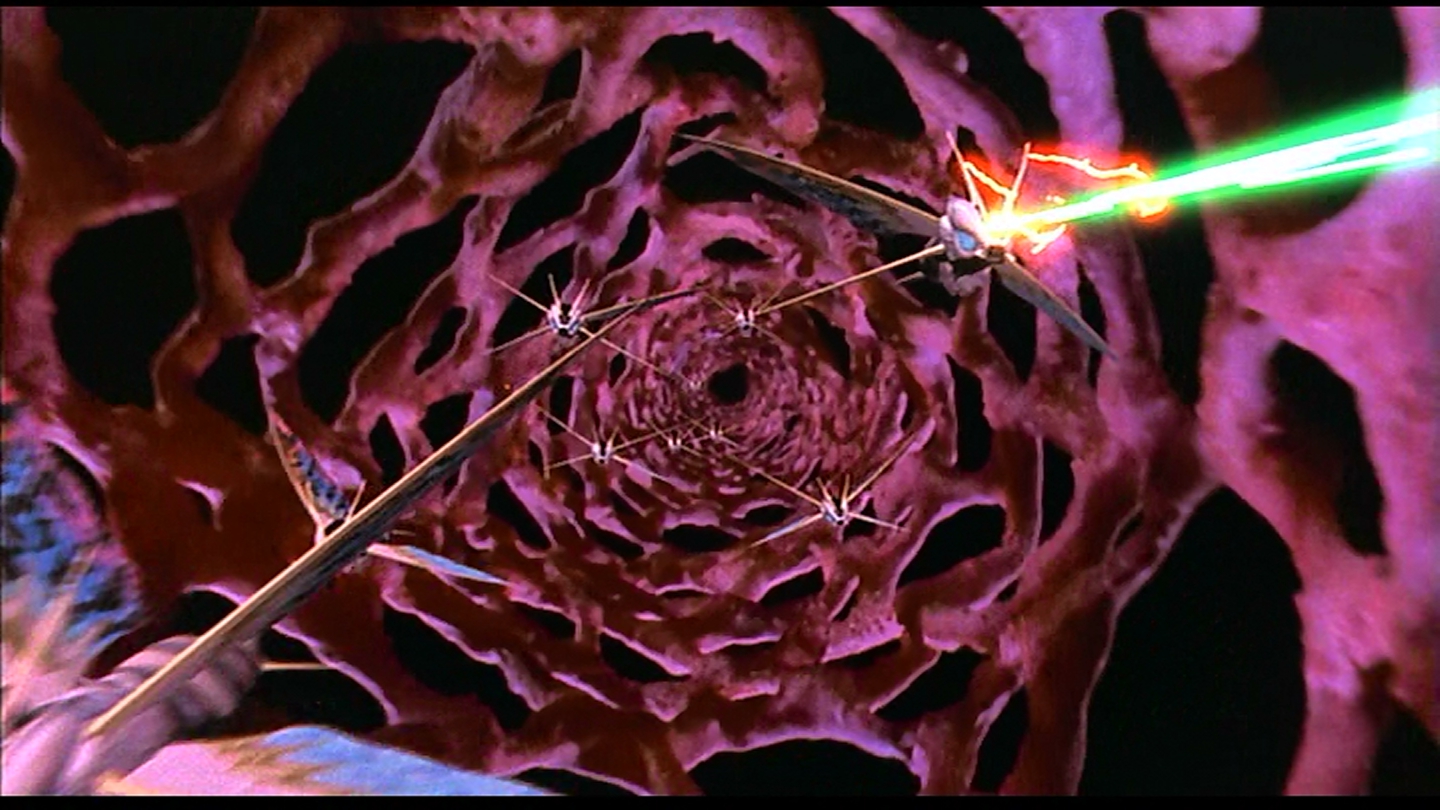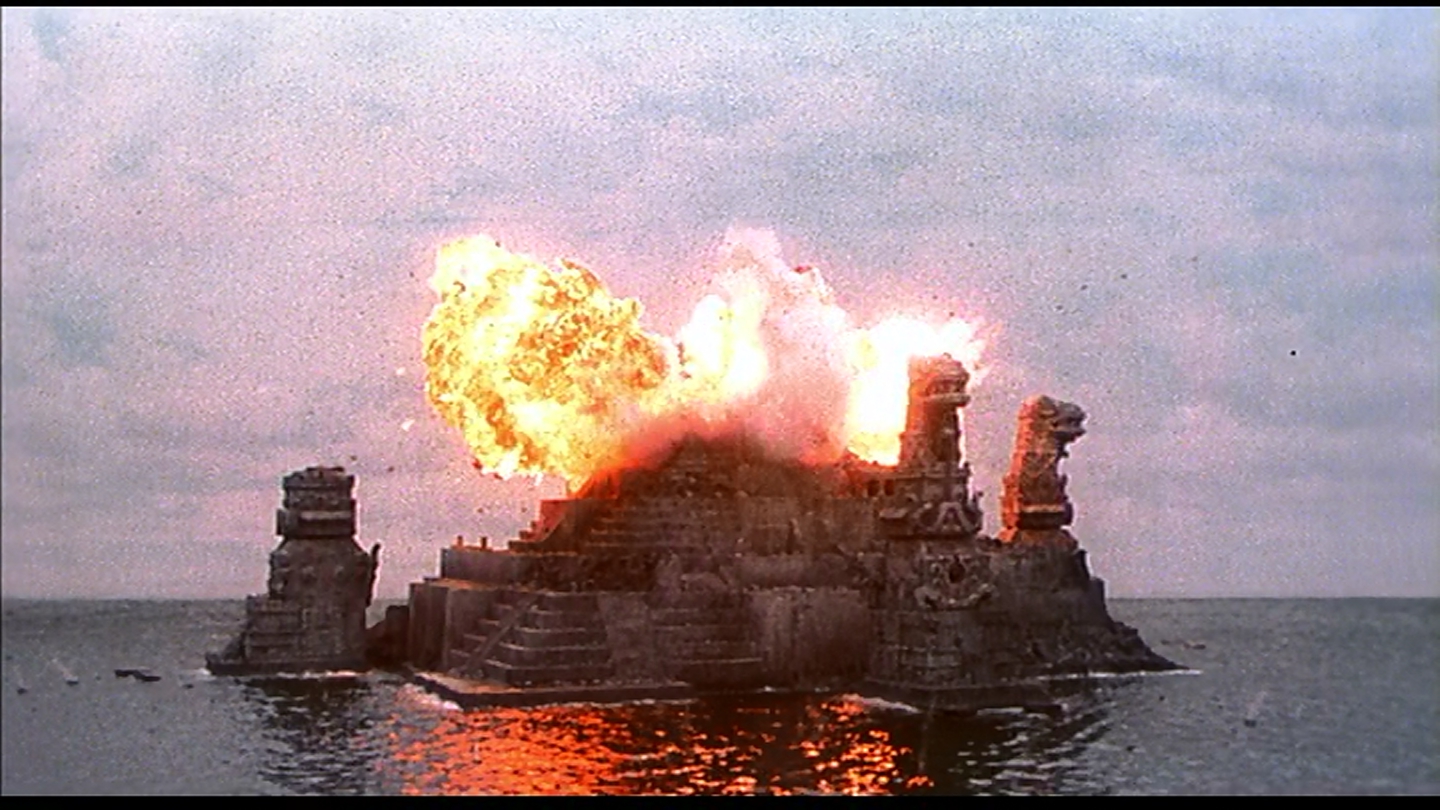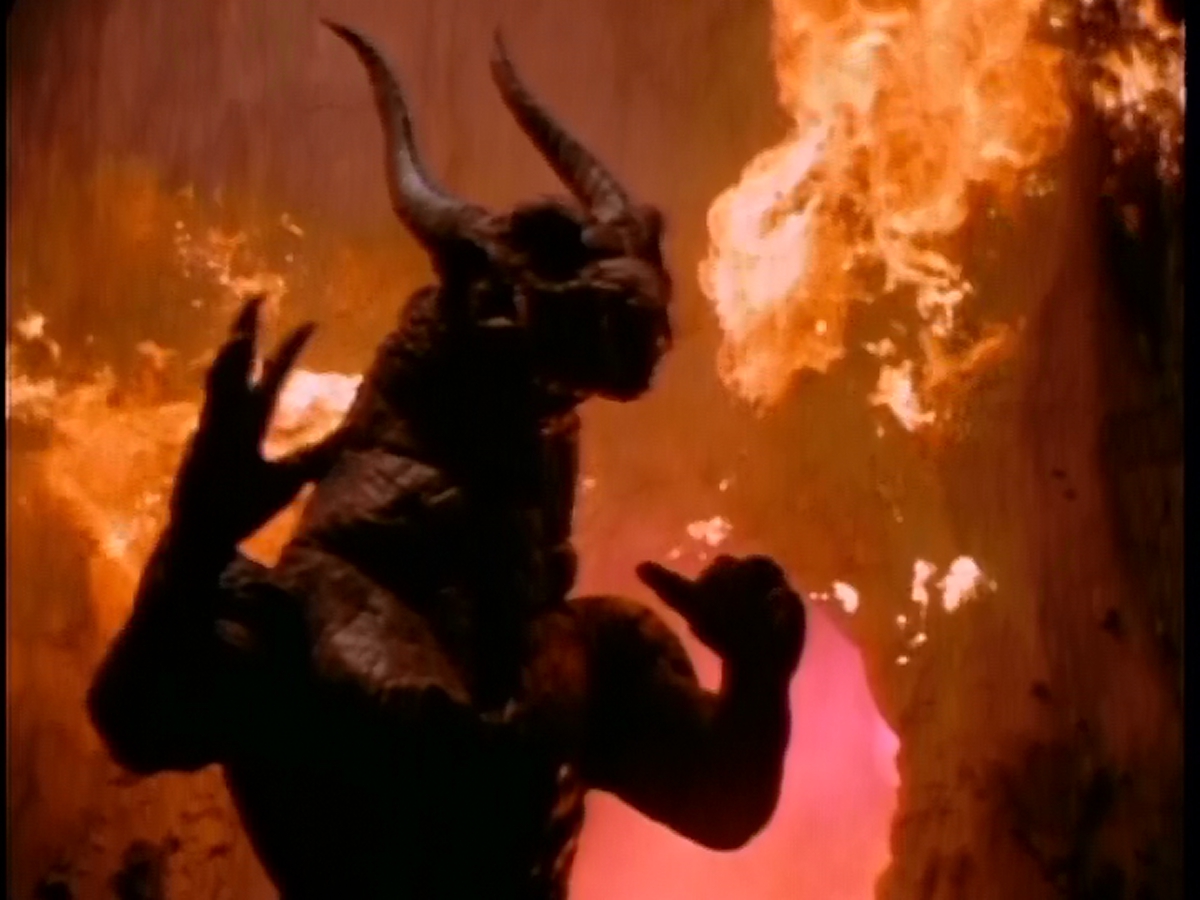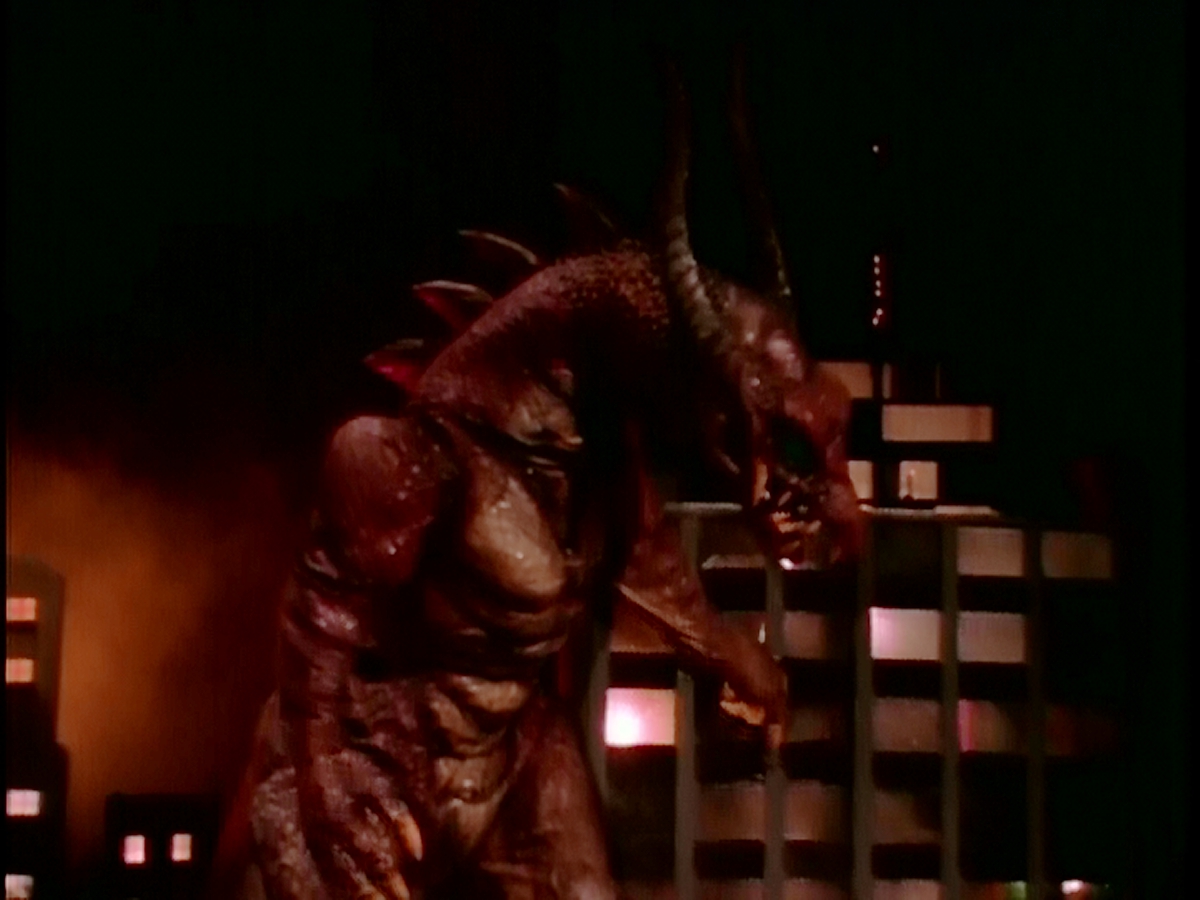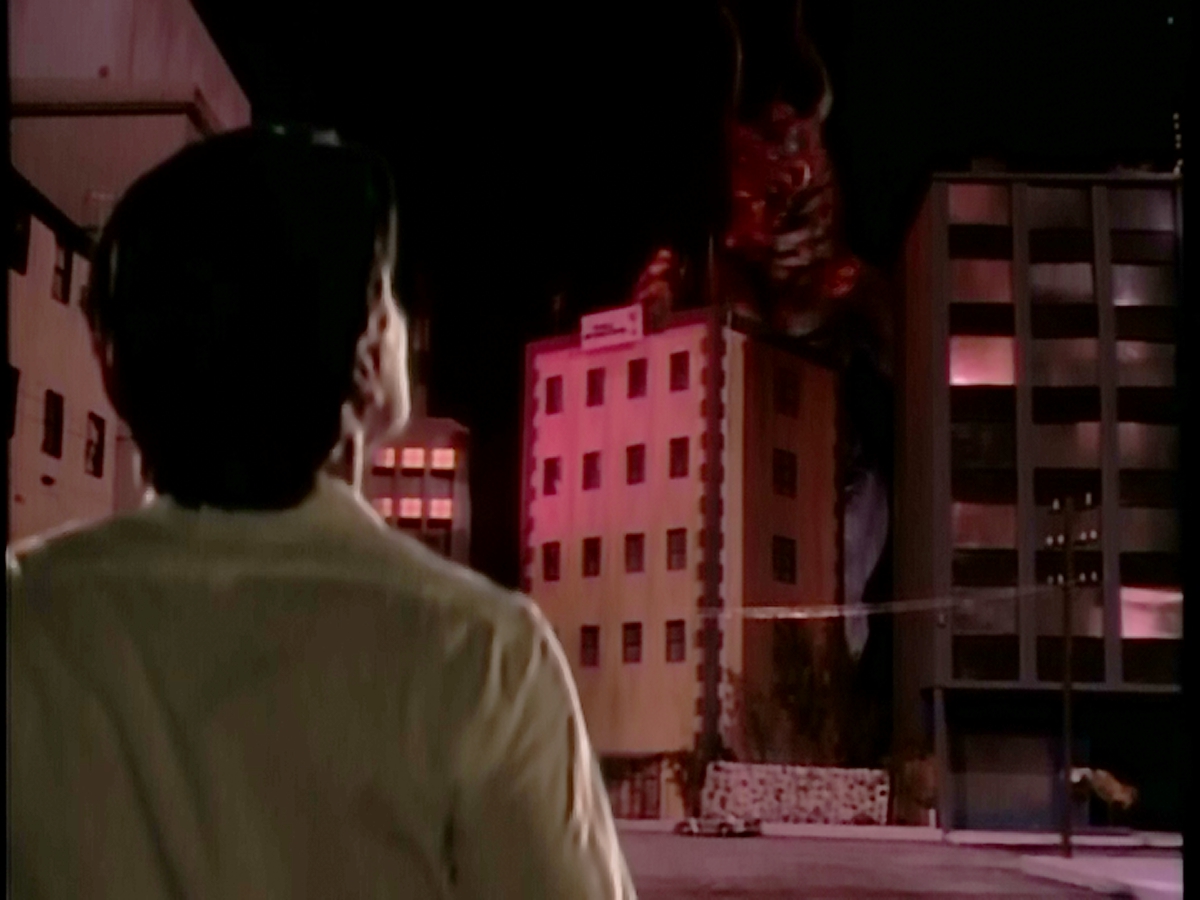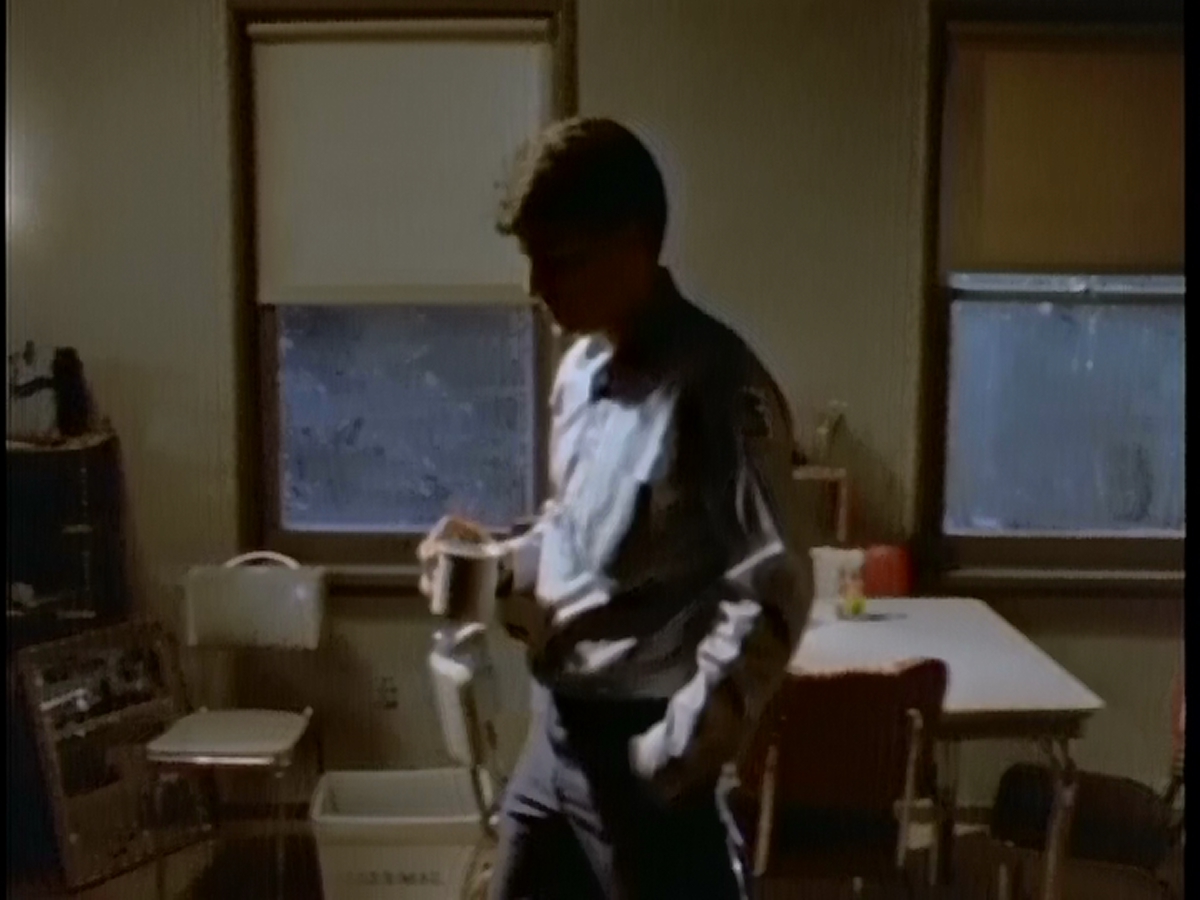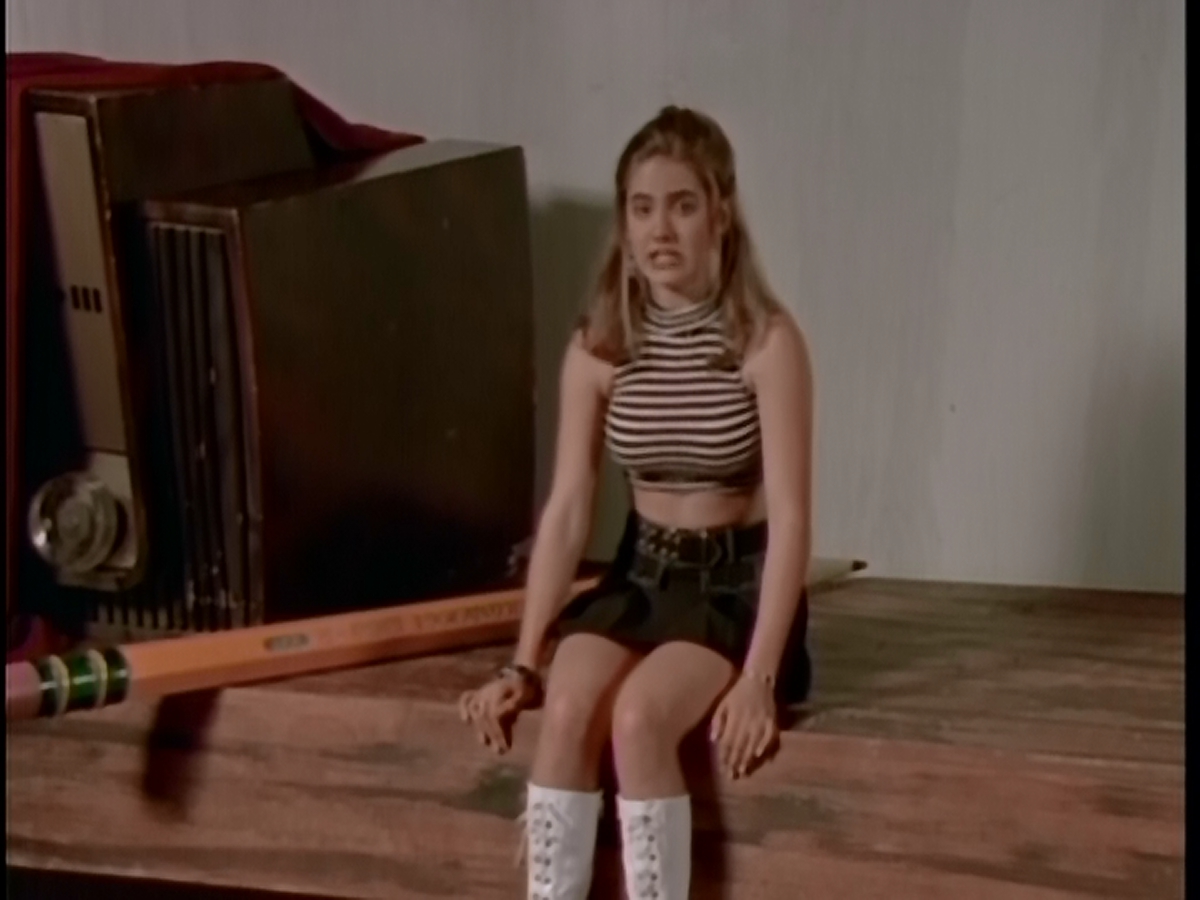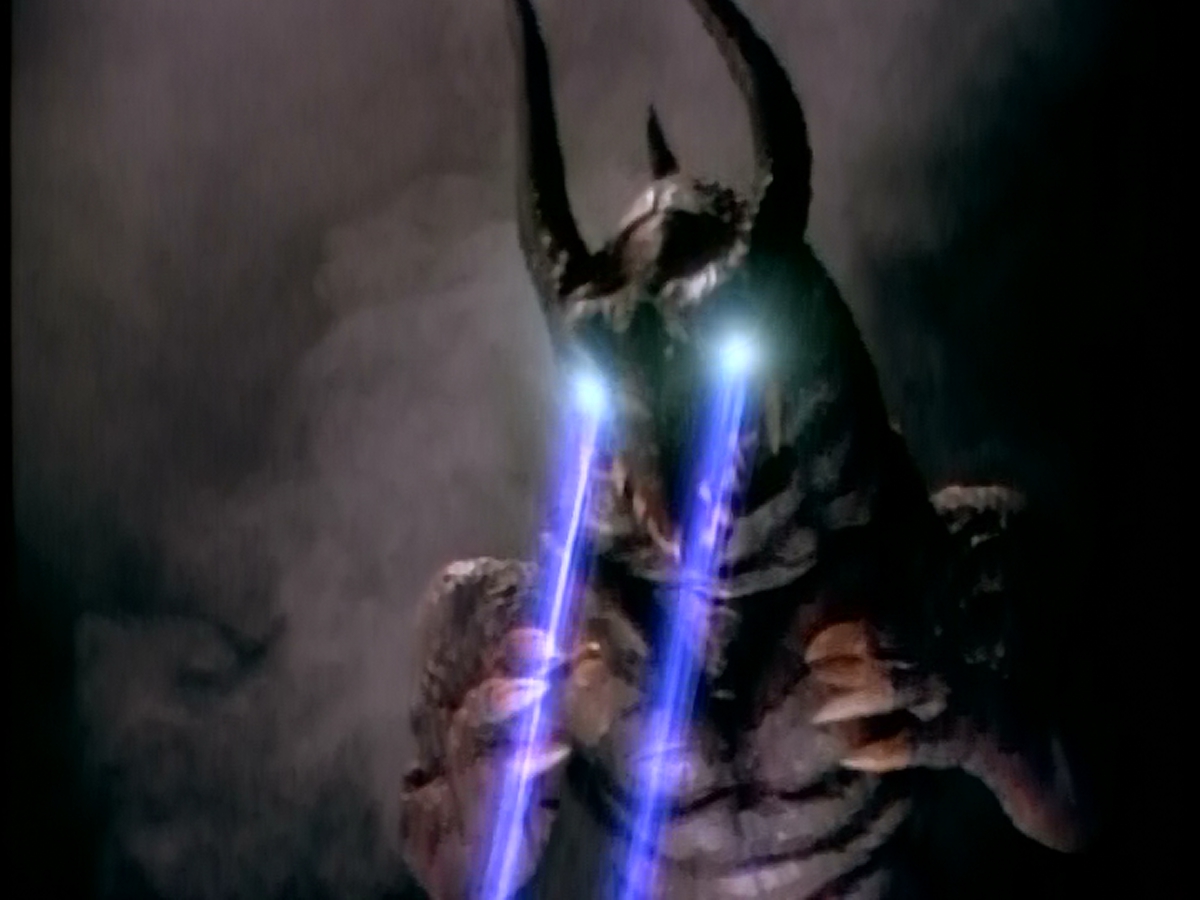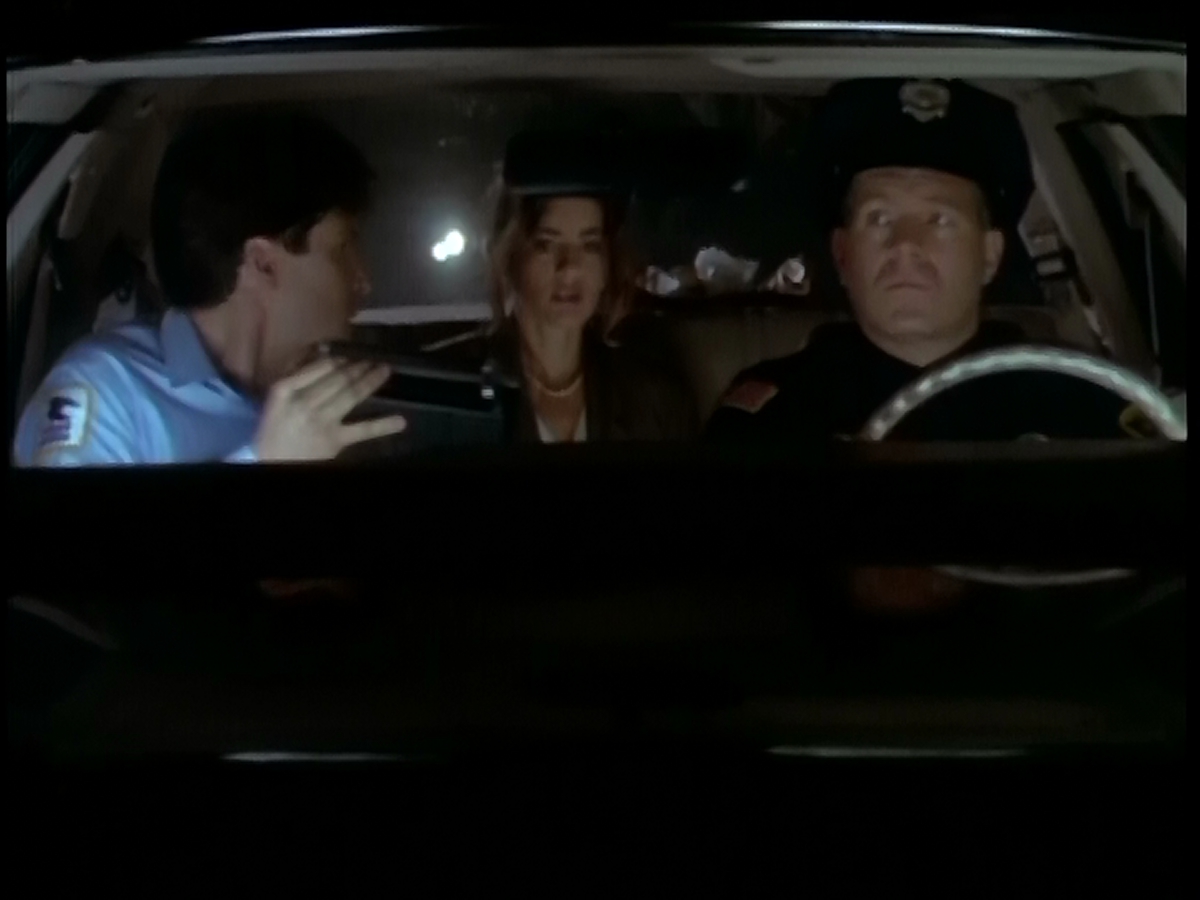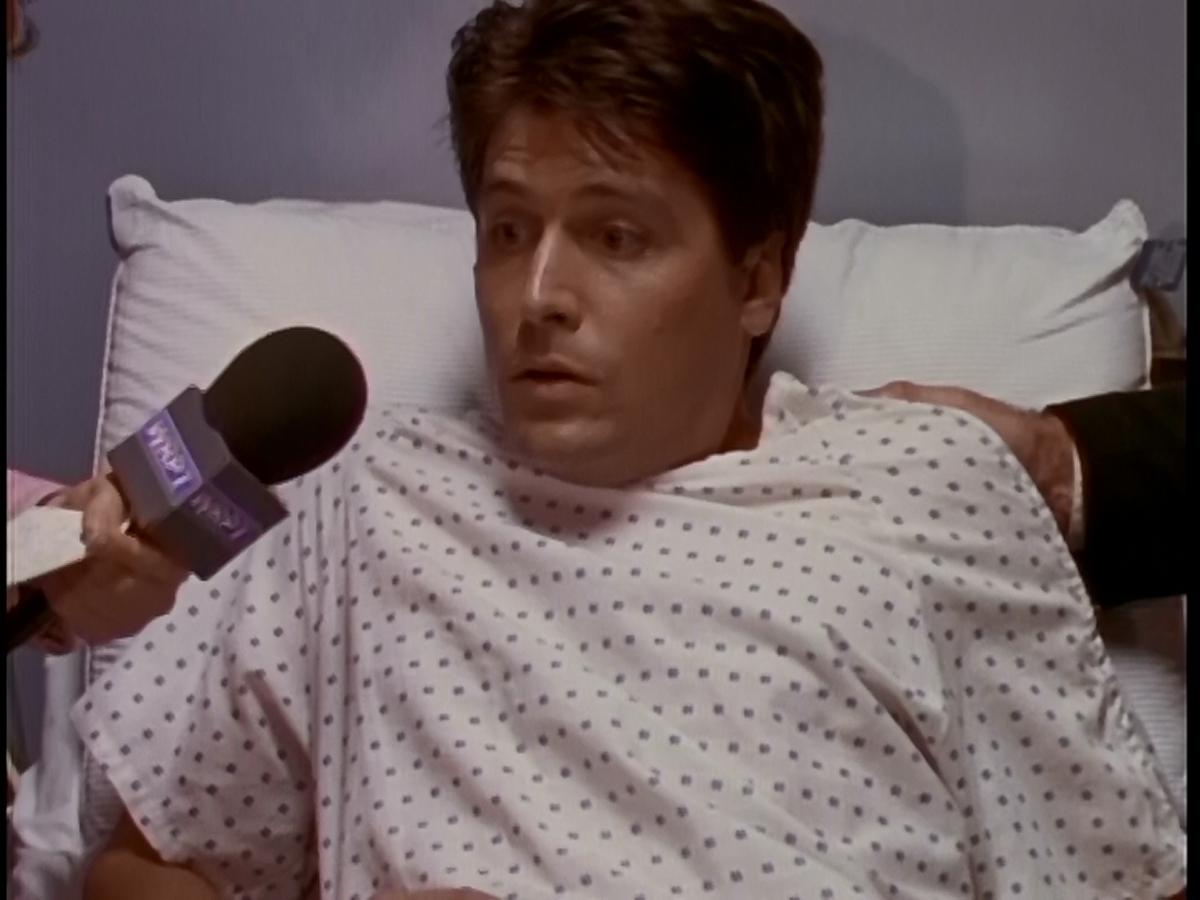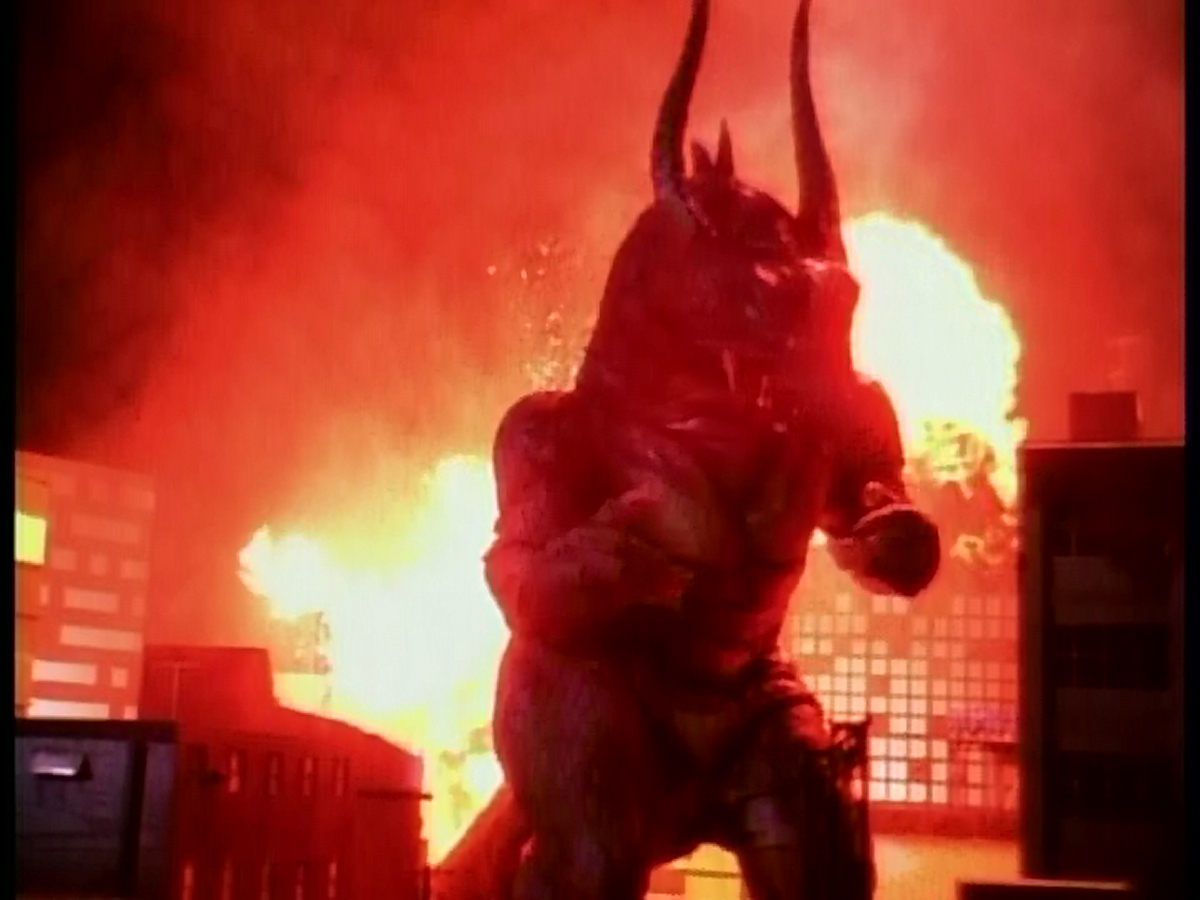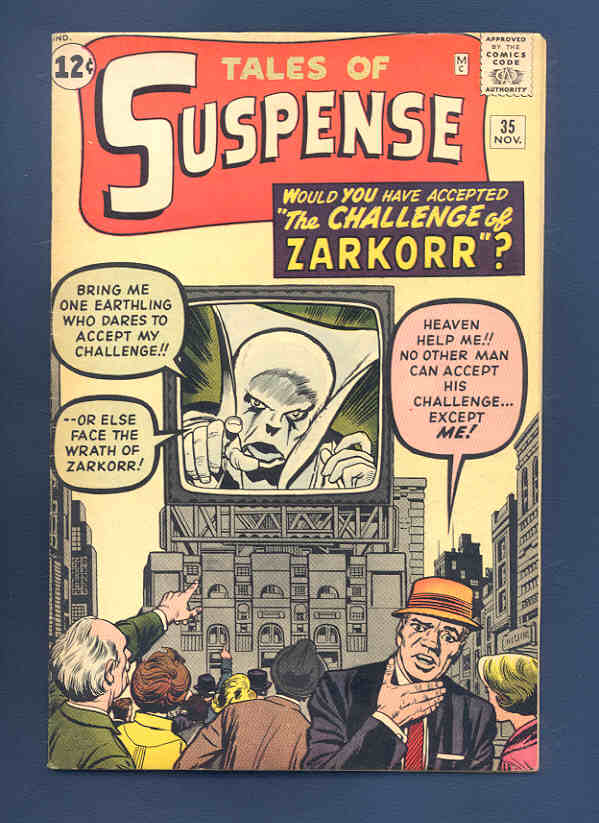The introductory sequence for Godzilla 2014 shows us a history of man's depiction of monsters, and grainy government footage that gets redacted before our eyes. For the non-hardcore Godzilla fan, this associates Godzilla with the fantastic monsters depicted in the ancient illustrations, and brings them to the present day. At the same time, and this is more important for the more dedicated Godzilla fan, it implies a manipulation of the past, a false history, a sense that what we know is not exactly what happened. This prepares both groups for the differences between the Godzilla they know and the Godzilla they are about to see. It's a brilliant piece of subtlety that also functions to establish a deep history for the film, one that acknowledges Godzilla's relationship with nuclear weapons testing.
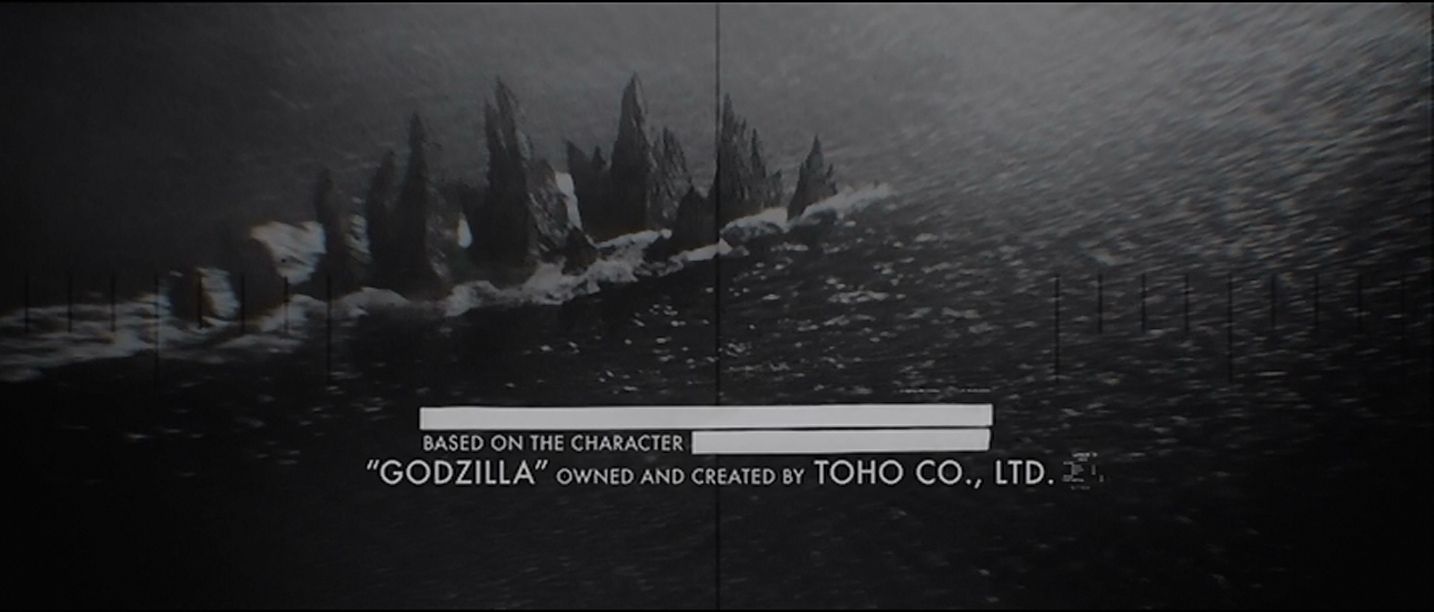
After a lovely CG nuclear detonation, the Godzilla title is then shown amid floating dust motes, and the implication is clear: Godzilla is fallout from nuclear testing. This is the sort of referential respect that gives this film more heart than the hollow 1998 film. Clearly, Gareth Edwards studied the franchise, and used them to build a film of his own.
Legendary had, the previous year, produced Guillermo del Toro's Pacific Rim. If any studio was going to let the director sit back and do what they felt necessary with giant monsters, this was it. Edwards' Godzilla cost $30 million less than Pacific Rim, and ultimately made a hundred million more at the box office, but I can't think about one without considering the effect of the other. I suspect Pacific Rim showed that the production of Godzilla was possible, and broke the idea of non-silly kaiju films to general audiences. Legendary's gamble has paid off. They now have two franchises. It's also clear that Legendary has it in for San Francisco. Both Trespasser and Godzilla trash the Golden Gate Bridge.
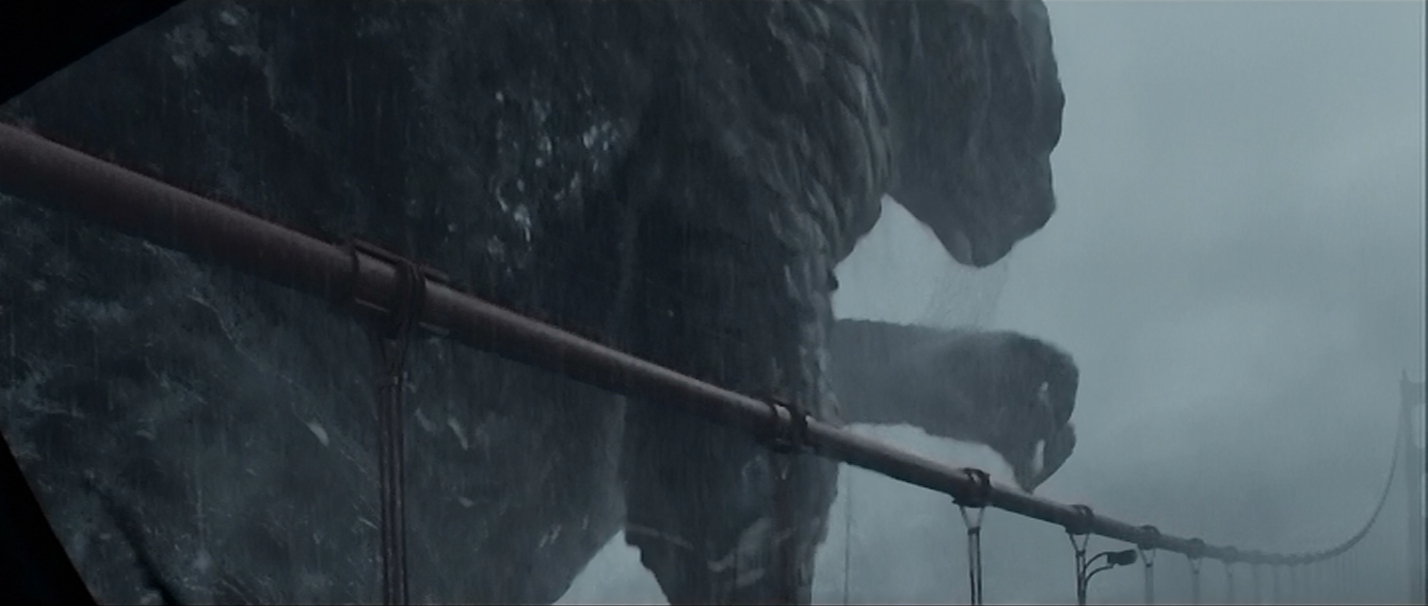
Gareth Edwards' Godzilla takes a lot of modern ideas and mixes them in with the usual Godzilla stuff. Strained father-son relationships, so often apparent in JJ Abrams' work, are used with a more humanizing hand. The obsessive nature of conspiracy theory is utilized as the wedge that drives Joe and Ford Brody apart.
The handling of the military is very different from previous films. Having just watched 1998 Godzilla, in which the military is portrayed as buffoons, it's something of a relief for the military to be portrayed in a positive light. In the Japanese films, the military is there for show, but is seldom portrayed as incompetent. Godzilla vs Hedorah and Godzilla vs Mothra are rare exceptions. And as Japan becomes more comfortable with its military, as it is in the Heisei Gamera and Godzilla's Milennium series, military action becomes more valorized. In order to gain Naval cooperation, certain Naval values had to be portrayed on-screen. I didn't think it was heavy-handed.
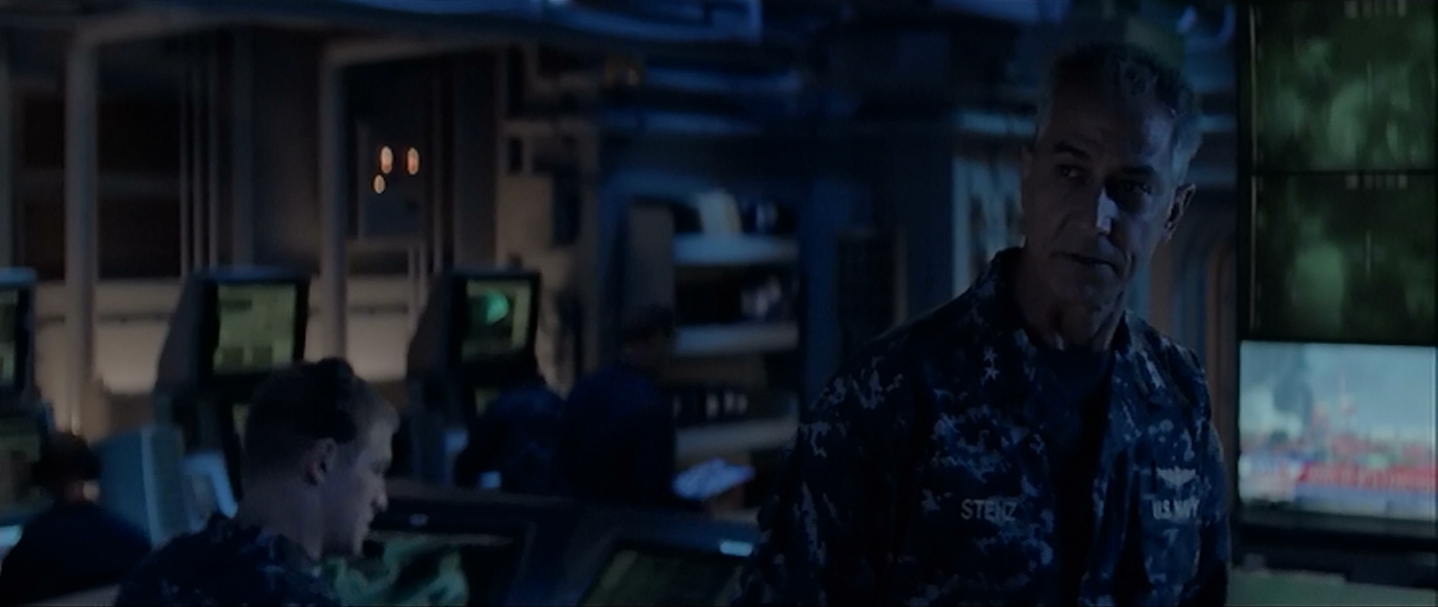
Also of historical note is Ken Watanabe's initial appearance, wearing a tribly and a vest, said to be similar to Eiji Tsuburaya, special effects director for the Godzilla films from the 1954 Godzilla until 1969's Godzilla's Revenge. It's a very subtle nod, but there are a lot of subtle nods in this film. His character is Dr. Serizawa, who I assumed was the son of the Dr. Serizawa from the 1954 film. This connection is not supported by the comic; Serizawa in the film had an eyepatch, he does not in the comic.
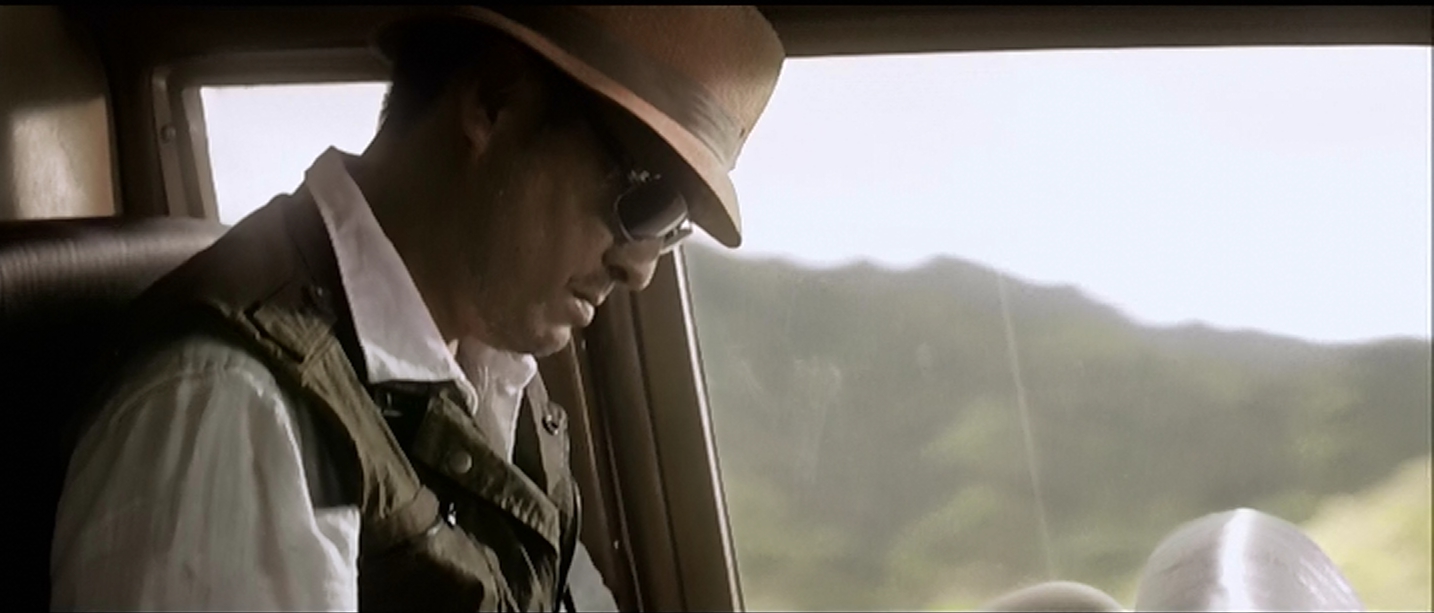
Another interesting piece of Edwards' direction is his ability to convey the size of what the viewer is seeing. The human-kaiju interactions are excellent. Often, the creatures are too large to be framed entirely.
In what is a lovely call back to the first set fo Godzilla films, Dr. Serizawa attempts to kill the MUTO crysalis by electrocuting it, similar to the way Japan attempted to hold Godzilla off by erecting gigantic power lines. Didn't work then. Doesn't work now.
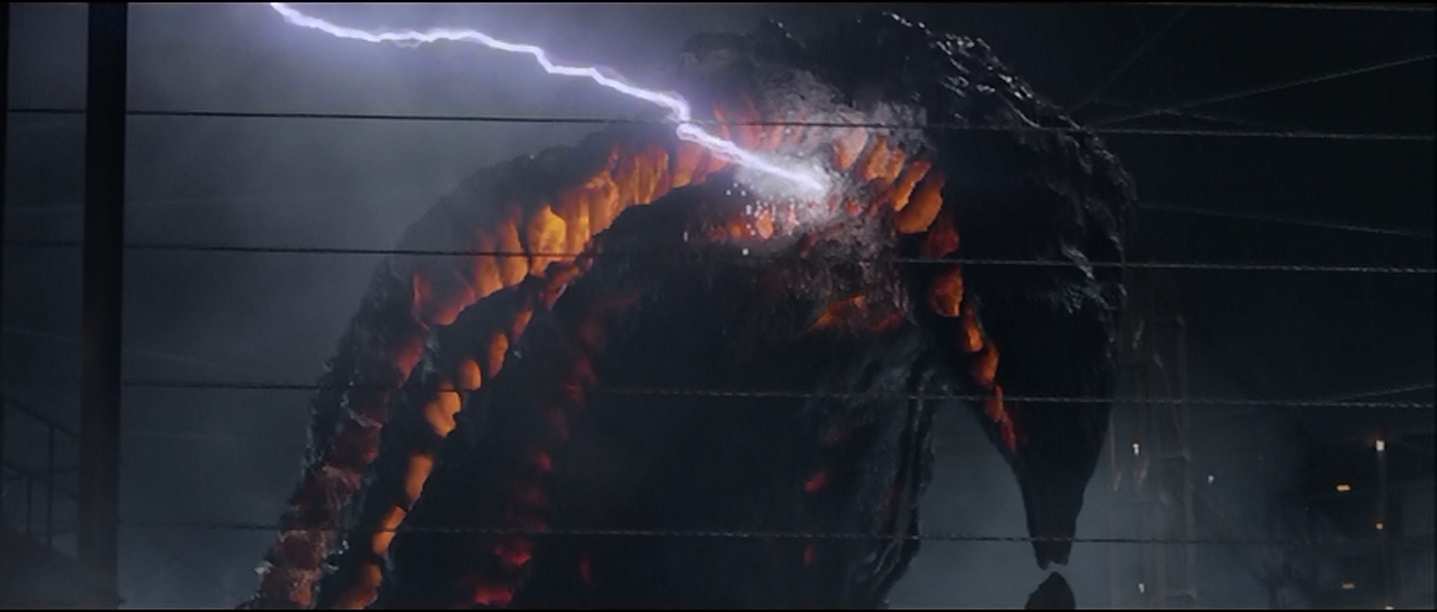
This is also the first film since the Godzilla Raids Again to spend time in the wake of the monsters' rampage. We see broken bodies, refugee camps, individuals with the thousand-yard stare. These details set the film more firmly in reality, showing us the effects of the monsers gives power and reality to those monsters. So that even when they are no on screen, their presence is felt. Much of the film refelcts recent disasters that have been caught on video, with a lot of attention to the 2011 Tōhoku earthquake, tsunami, and subsequent Fukushima reactor disaster and exclusion zone, as well as recent American experiences with Hurricanes Katrina and Sandy. There's a bit of 9/11 imagery present, also. When buildings fall, they billow tremendous clouds of smoke.
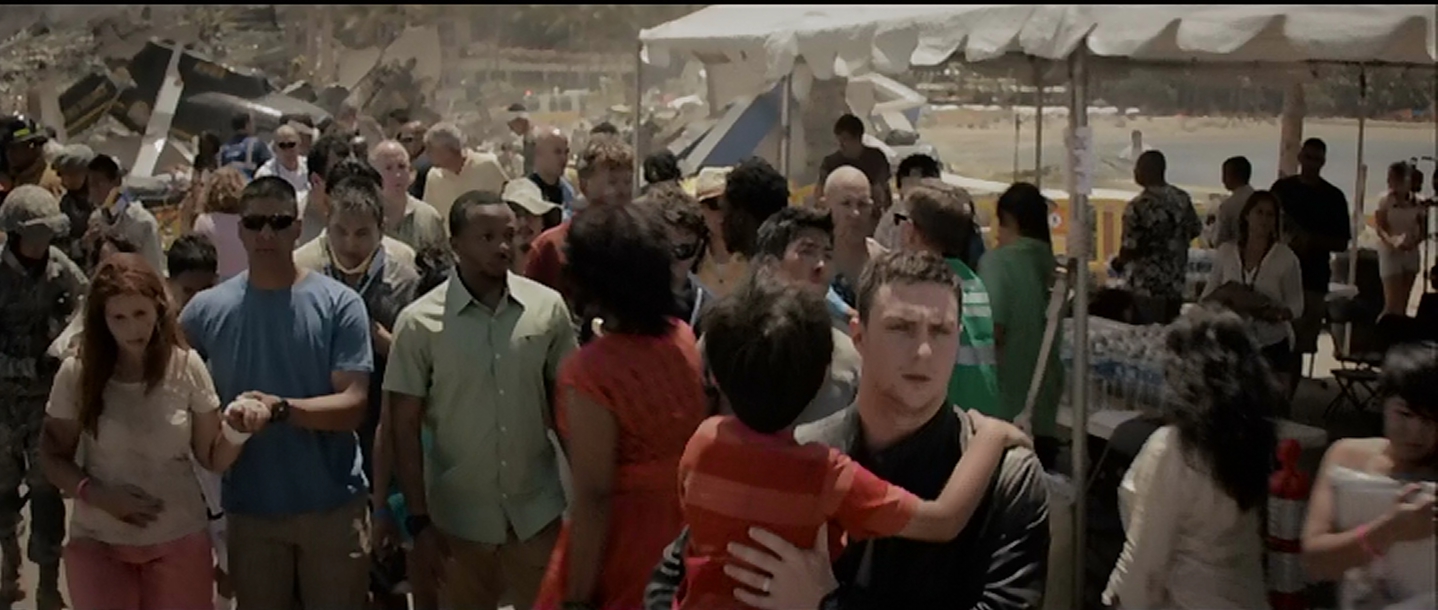
The MUTOs are an interesting, unexpected design. They are not massive, but rather achieve their size through very long limbs, giving them a spidery appearance. Their heads are sleek and pointed, as are the ends of their limbs. They are much more developed than many kaiju. They have a life cycle, and there's a touching courtship where the male MUTO brings a dowery nuclear missile to the female. I like the sexual dimorphism, that each sex has different characteristics.
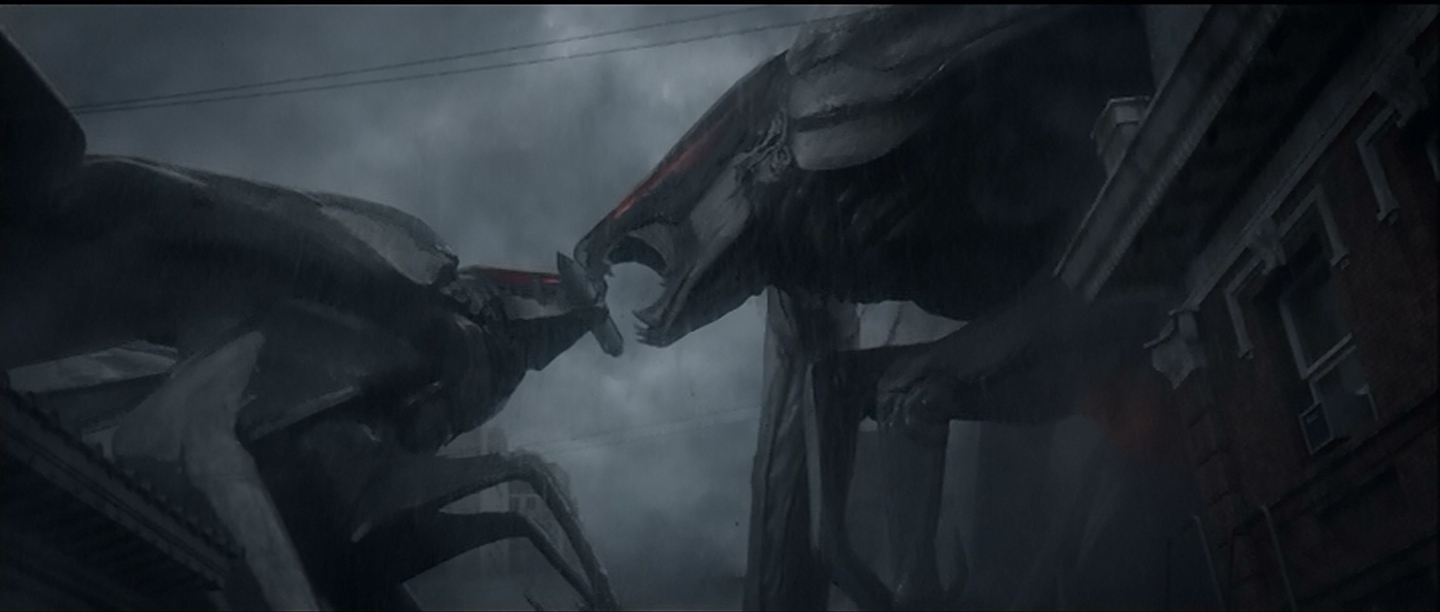
Godzilla's new design is a good homage to the classic Toho films: three rows of spines, the arms more proportional to a human than a Tyrannosaur, upright gait, and atomic breath. He is covered in keloid scars, as with the original Godzilla, one of many tributes to the horrors of Hiroshima and Nagasaki. His actions are similar to the late Showa era, heroic Godzilla, but there's also that 1954 feel of a true force of nature that cannot be resisted.
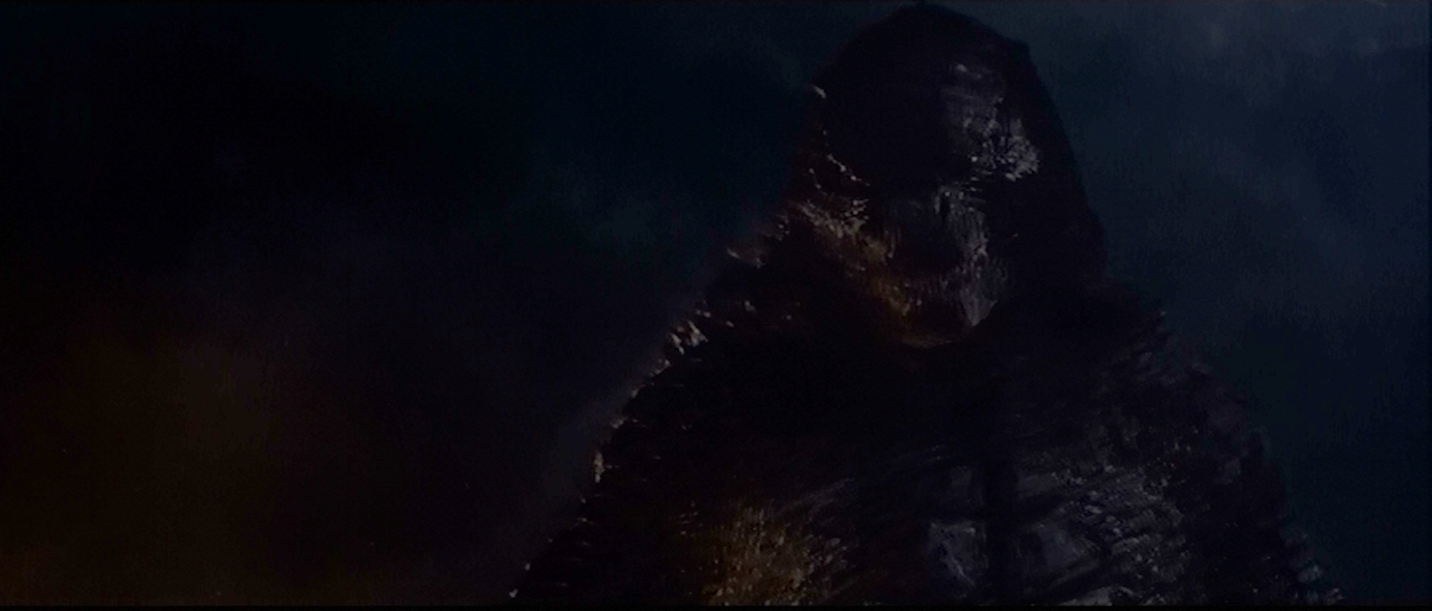
The end fight is a fantastic pay off. Godzilla can overpower any of the MUTOs, but when the work in concert, he's in trouble.
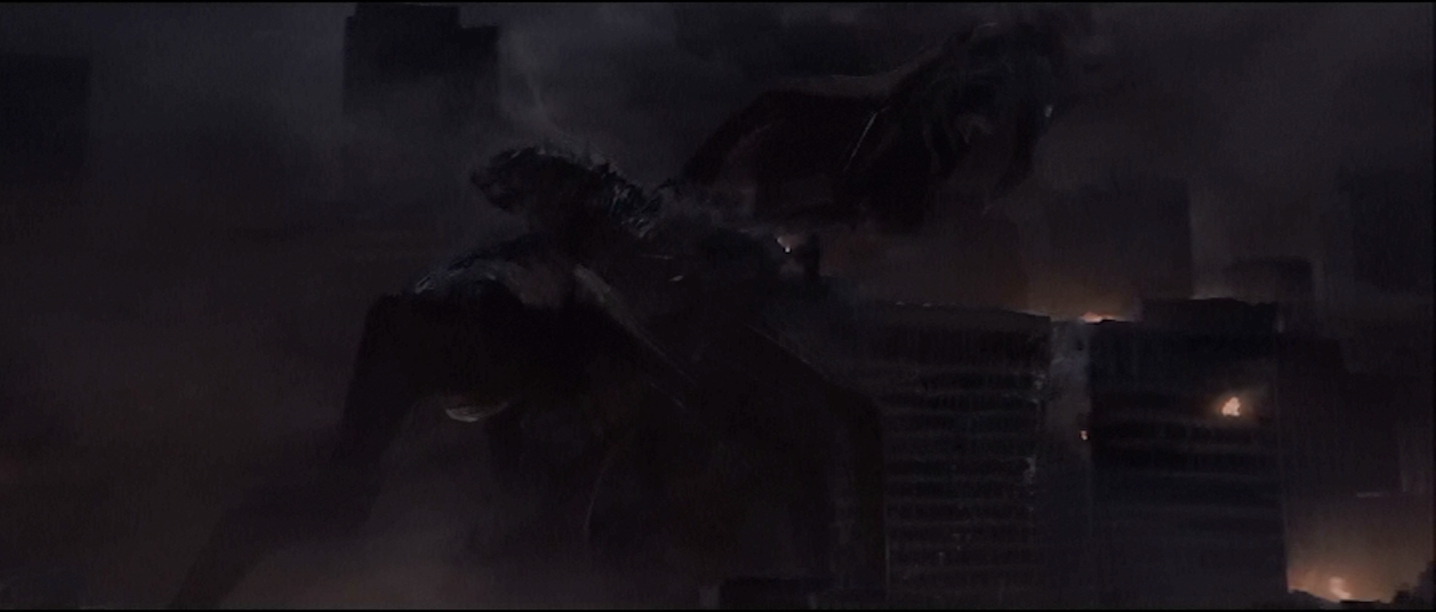
I've read a lot of complaints about the lack of time devoted to Godzilla in a film that bears his name. It doesn't bother me. That the initial fight is mostly left to the imagination (some of it can be seen the initial fight ) because the important part, the reveal of Godzilla and his terrifying battle roar, is. The Honolulu airport battle is brilliant, slowly showing us the MUTO, the destruction it causes, and then Godzilla stepping in, at which point it cuts away. This runs counter to audience expectation, but perfectly fine because it increases the appetite for the next confrontation. The battle in San Francisco is enough for me. It didn't last long enough to become repetitive or dull. Leave the audience wanting more.
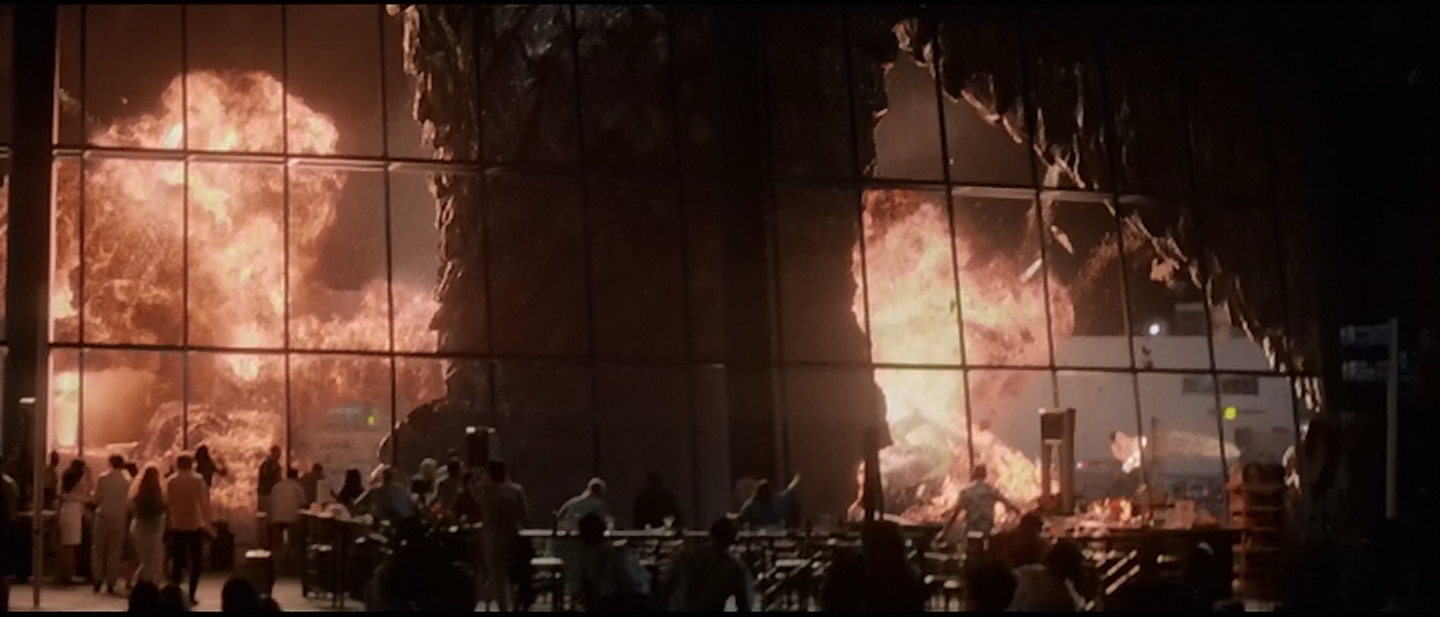
Brody, who has been our main character all along, tears the female MUTO out of the fight by burning her eggs, which could be a nod to Aliens or the 1998 Godzilla. This allows Godzilla to take on the MUTOS one at a time. That he can do.
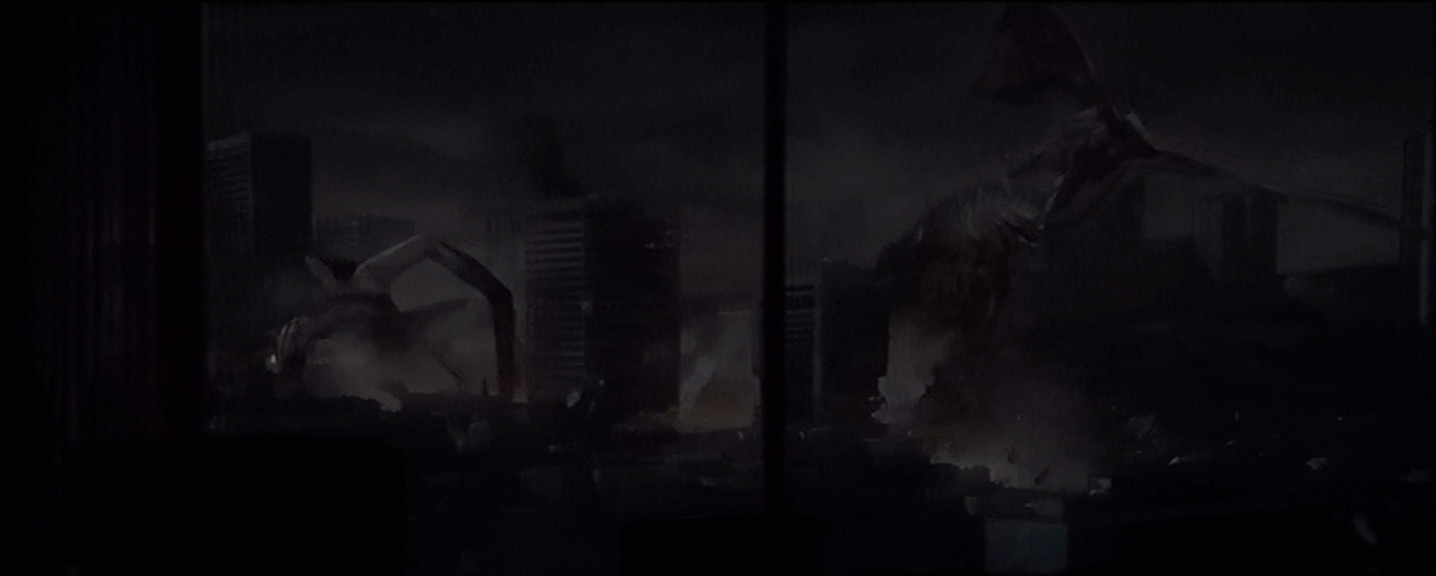
Godzilla finally defeats the male MUTO by smashing it with his tail, in a move similar to one displayed in Godzilla, Mothra and King Ghidorah: Giant Monsters All-Out Attack. Which seems appropriate. Godzilla is a brute in that film, and he is also a brute here.
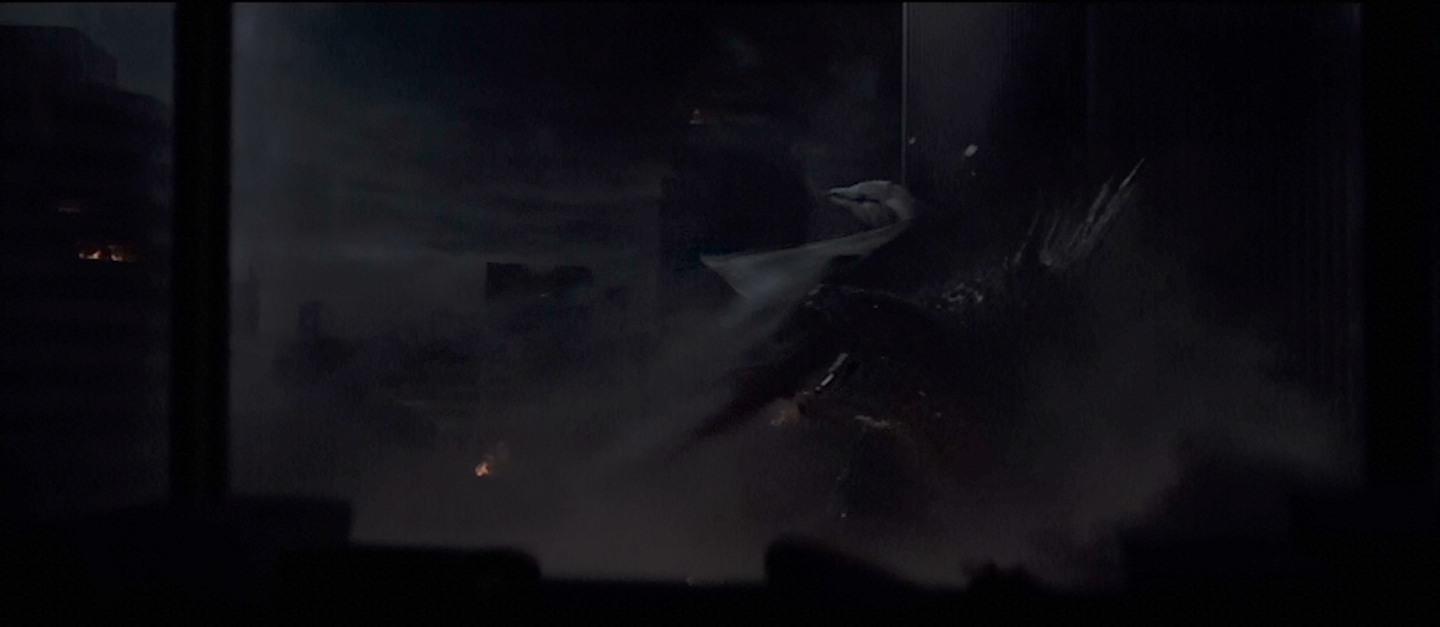
And then he performs his now-famous finishing move. Which is in line with the early Showa films. Godzilla's heat ray was not effective against Anguirus in Godzilla Raids Again or King Ghidorah in any of his appearances. I wonder if it would have been different if he's pried their jaws open and shot atomic fire directly into their necks.
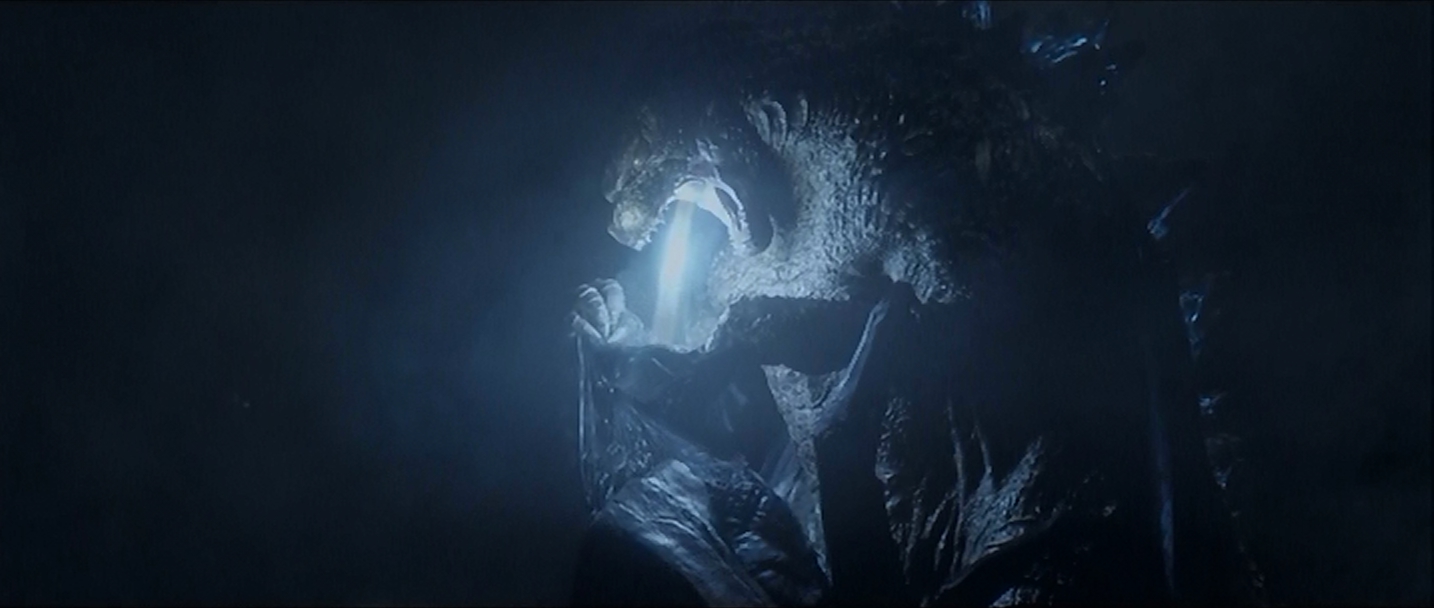
While Godzilla is more indestructible than he has ever been previously, since he survived ground zero at the fifteen megaton Castle Bravo blast. But he isn't invulnerable. He's hurt when a building gets dropped on him. He gets hurt fighting the MUTOs, and is clearly exhausted when it's all over. The best comparison I've heard is that Godzilla is a grumpy old man. He doesn't want to come out and bash the MUTOs, but that's what he has to do. And he does it well, but he needs a nap afterwards. Heck, I suspect that's how I'll feel when I get to be 60.
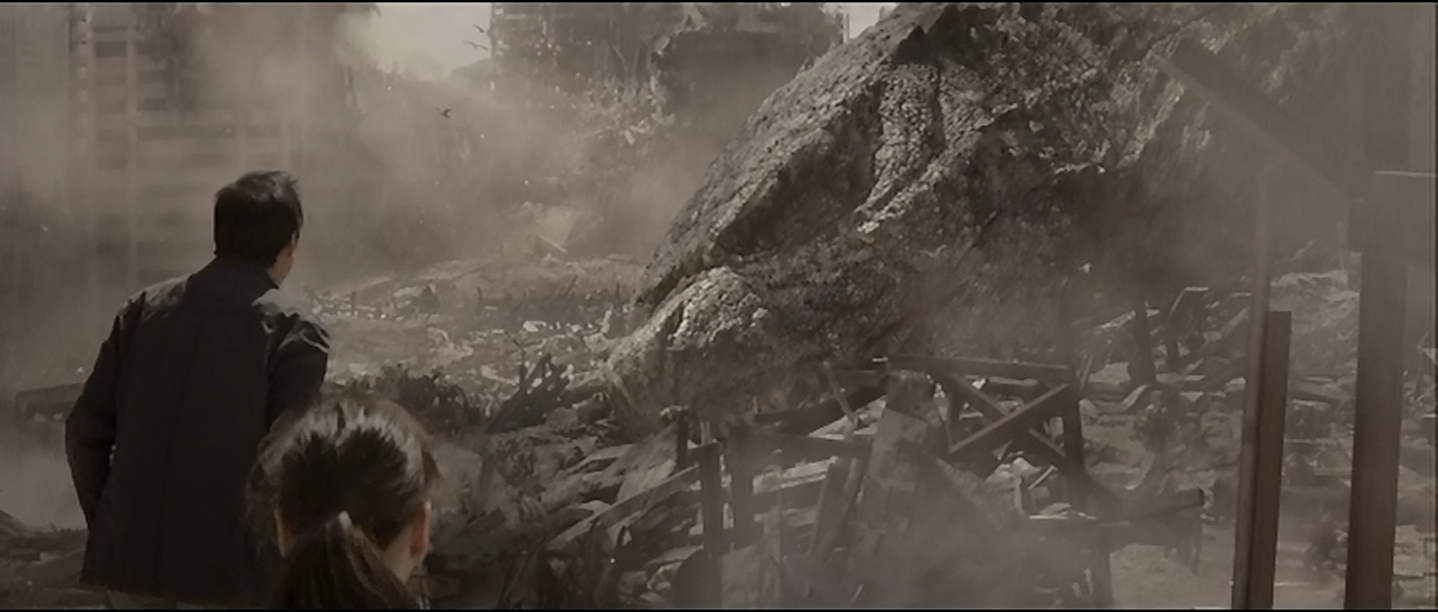
Is Godzilla 2014 a perfect Godzilla film? No. It has flaws. Did it exceed my expectations for an American reboot of the franchise? Yes it did. The designs were solid, the sound design fantastic, and the plot didn't make me roll my eyes. I have also realized that this film follows many of the plot points of Godzilla Raids Again. Godzilla emerges to fight its traditional enemy: Anguirus/the MUTOs. Godzilla and its opponent can be lured, either by flares or by nuclear weapons. And of course, it all famously goes down the tubes and Godzilla trashes Osaka/San Francisco.
Next up, back to Toho with the final installment of the Rebirth of Mothra.
